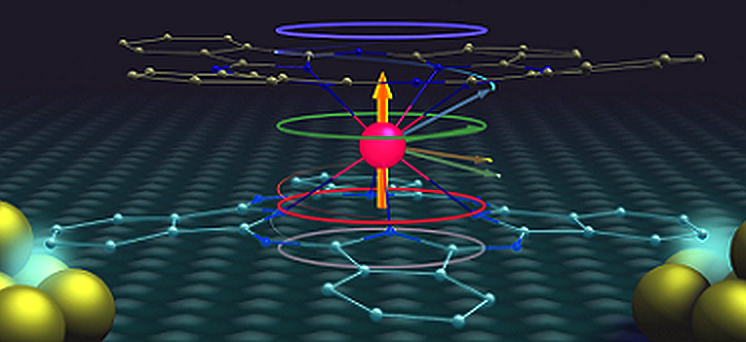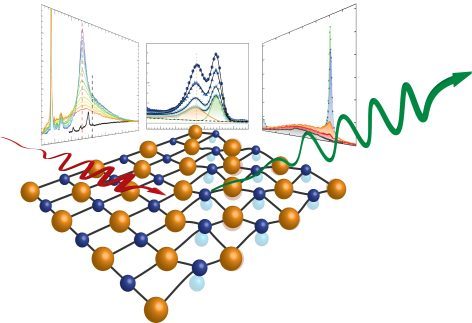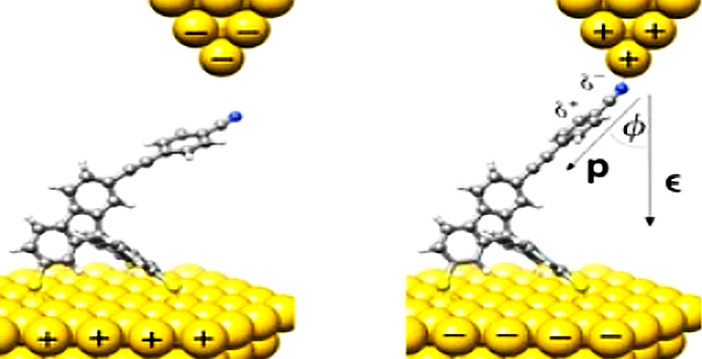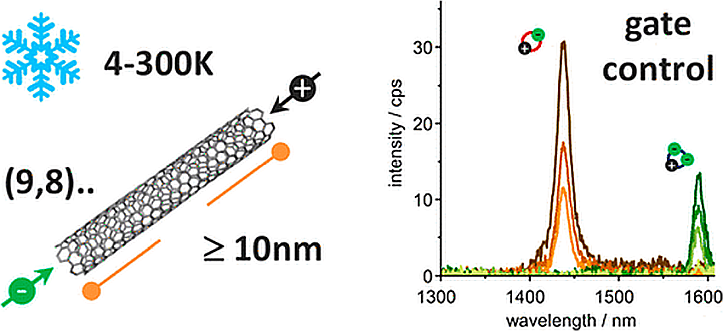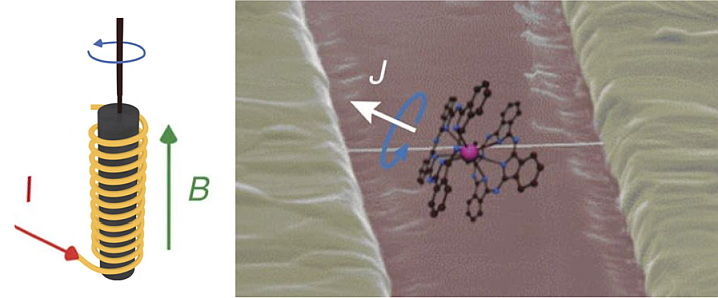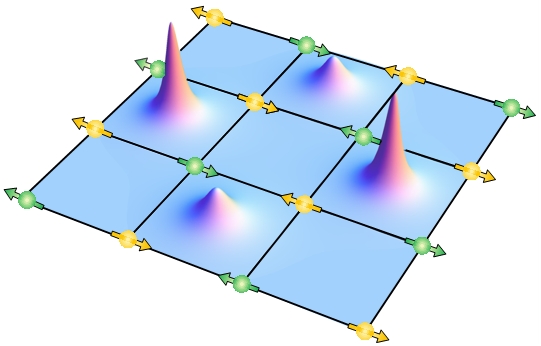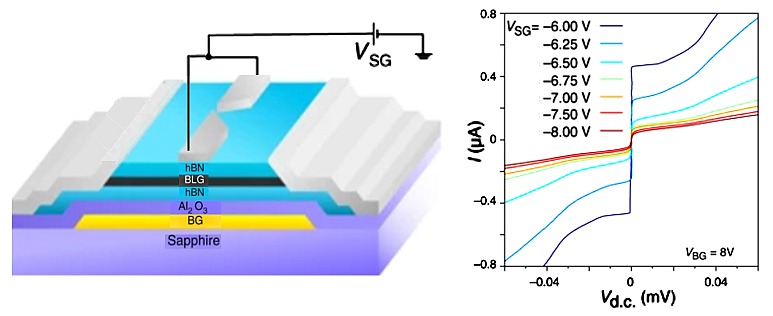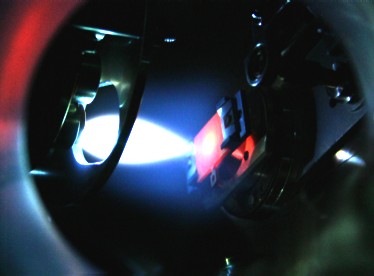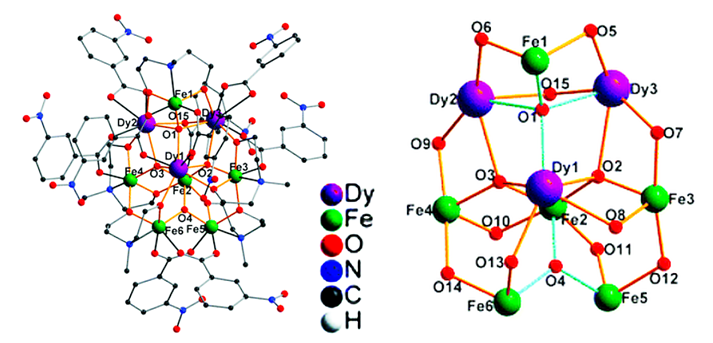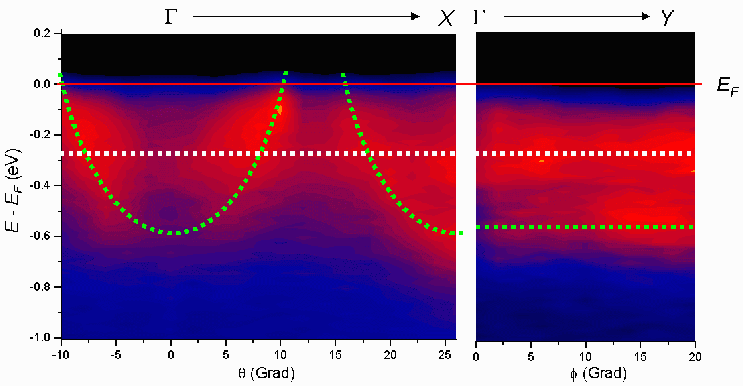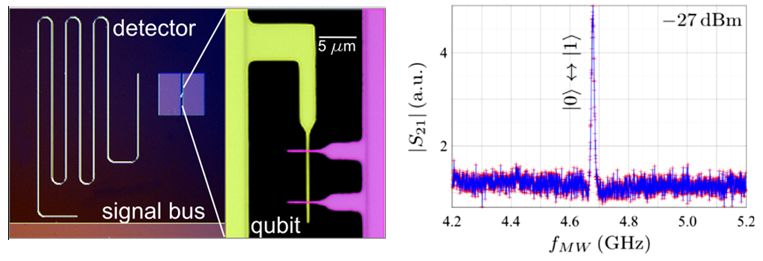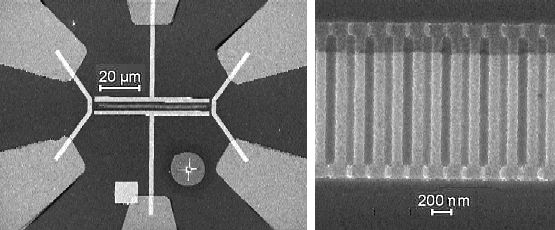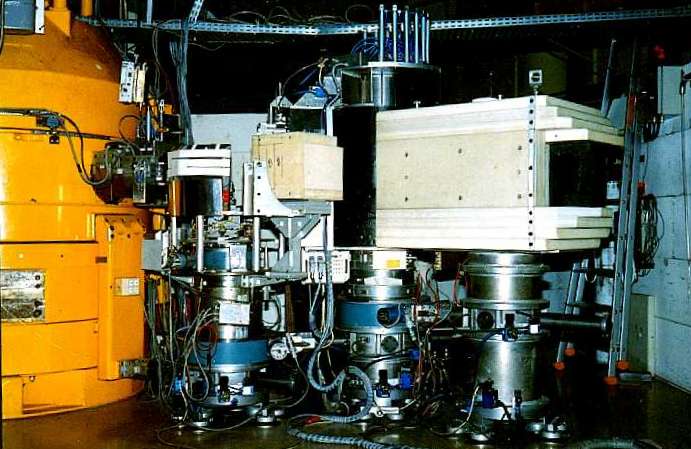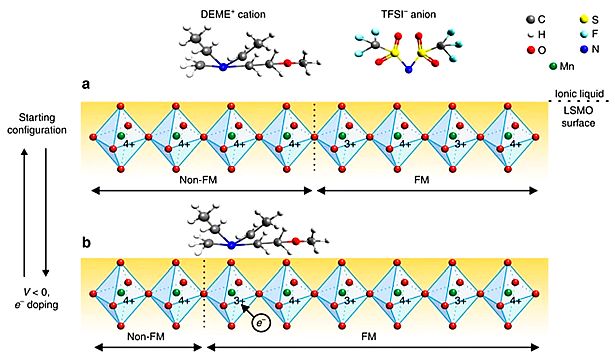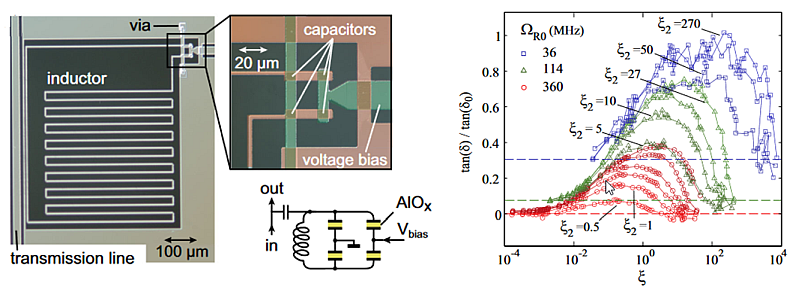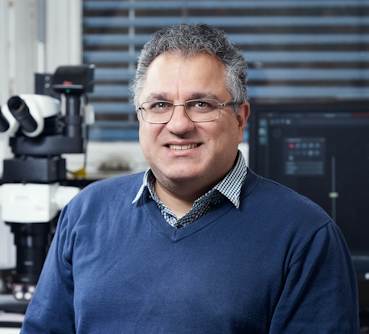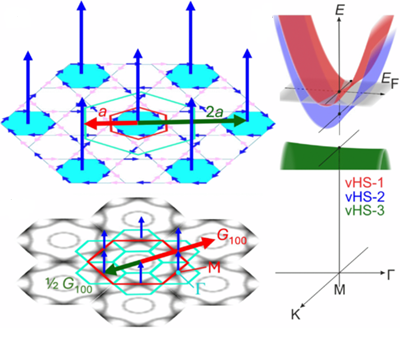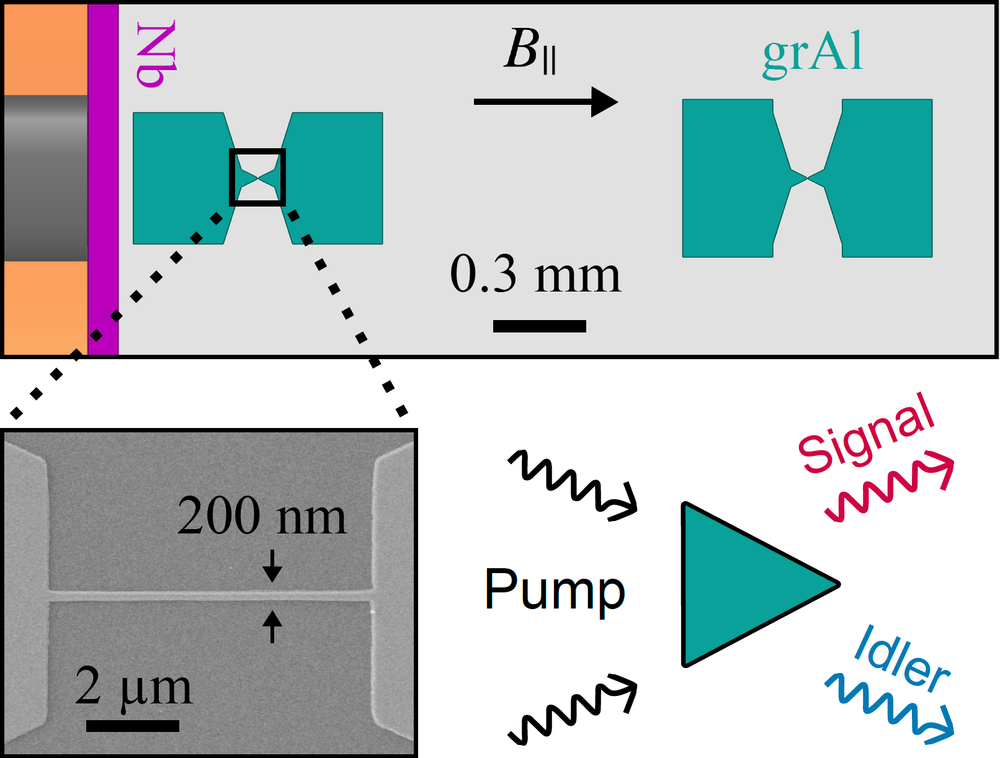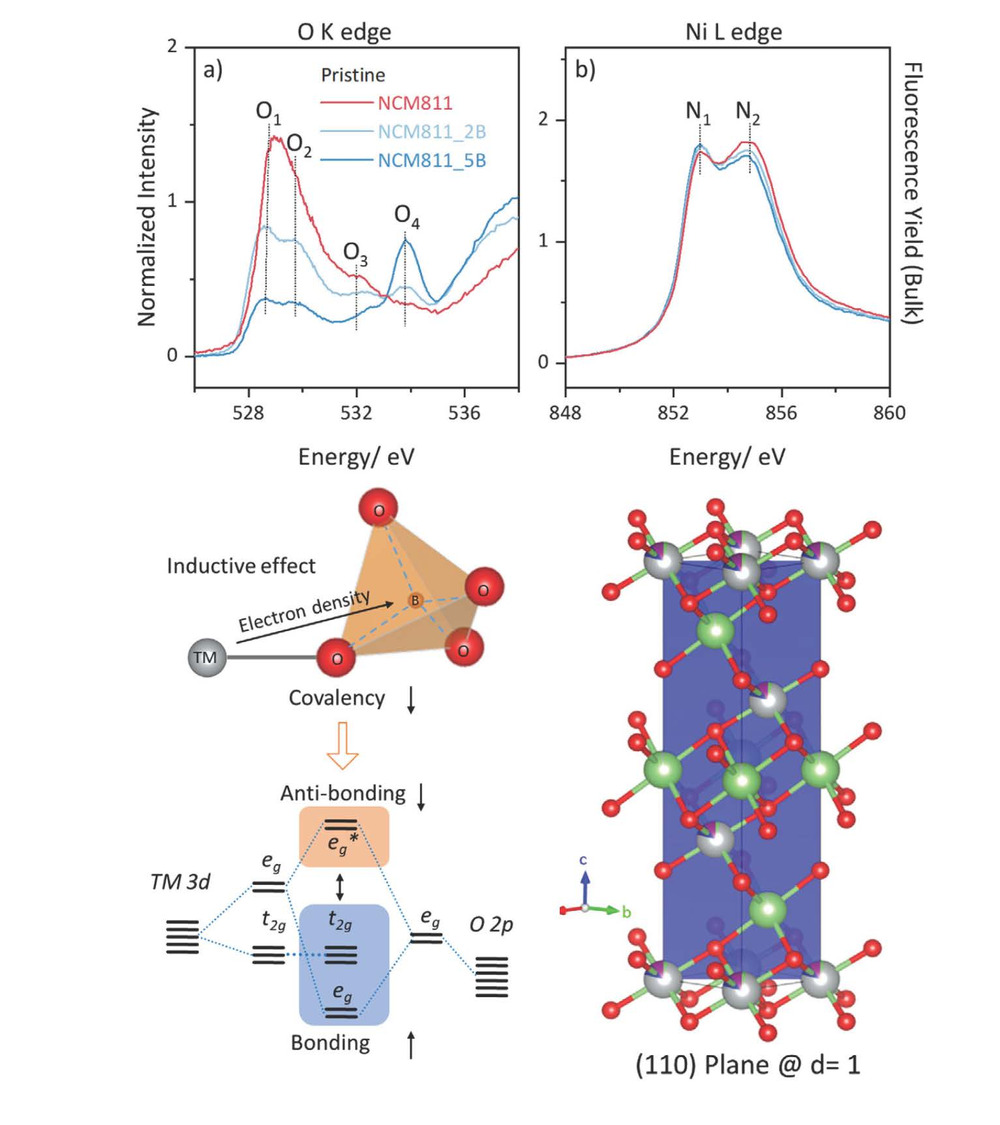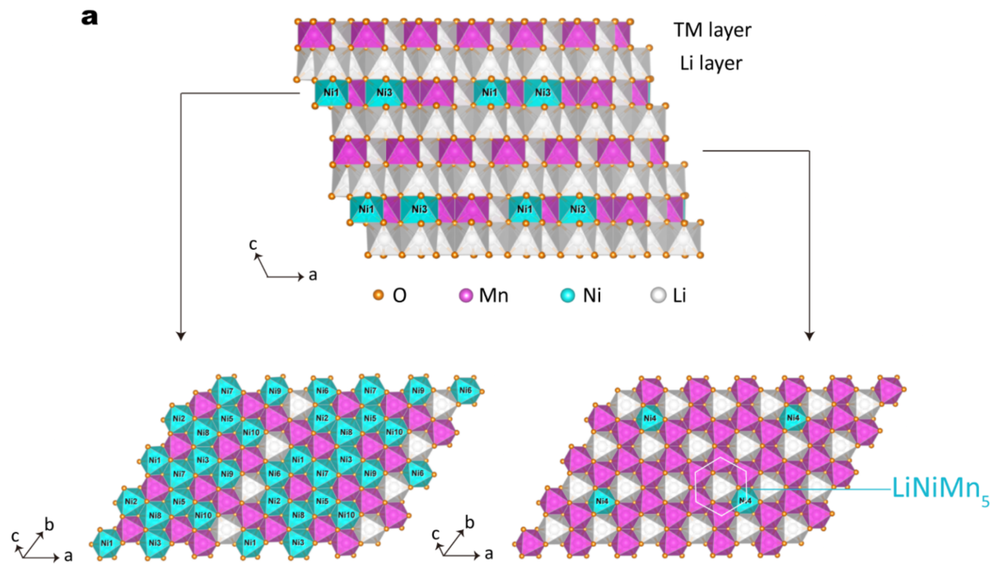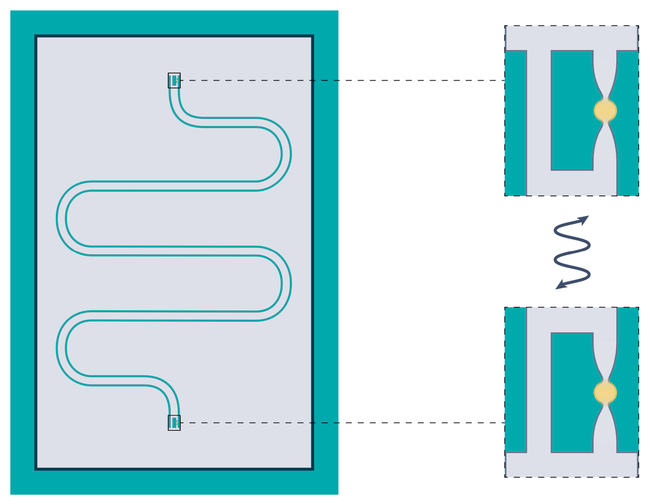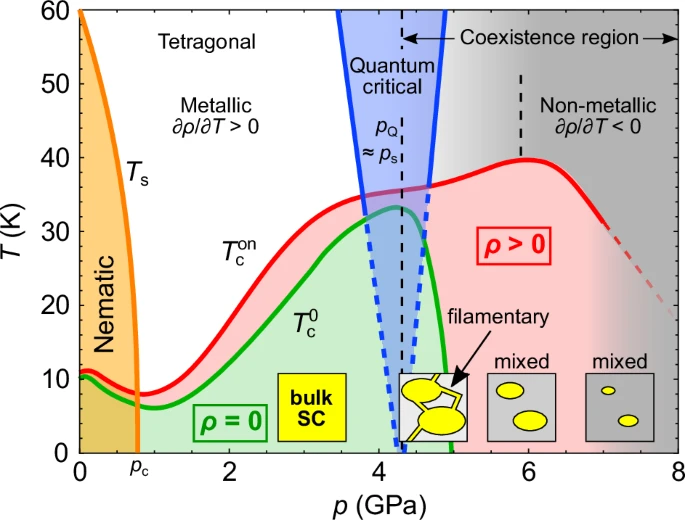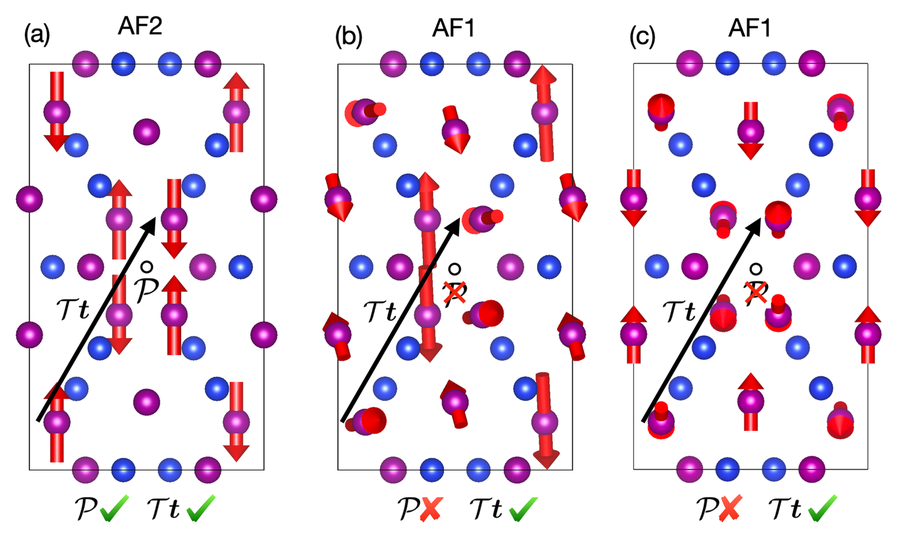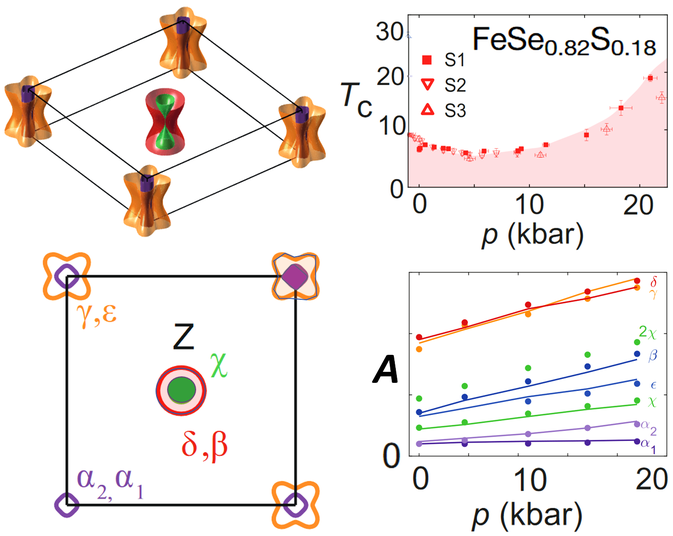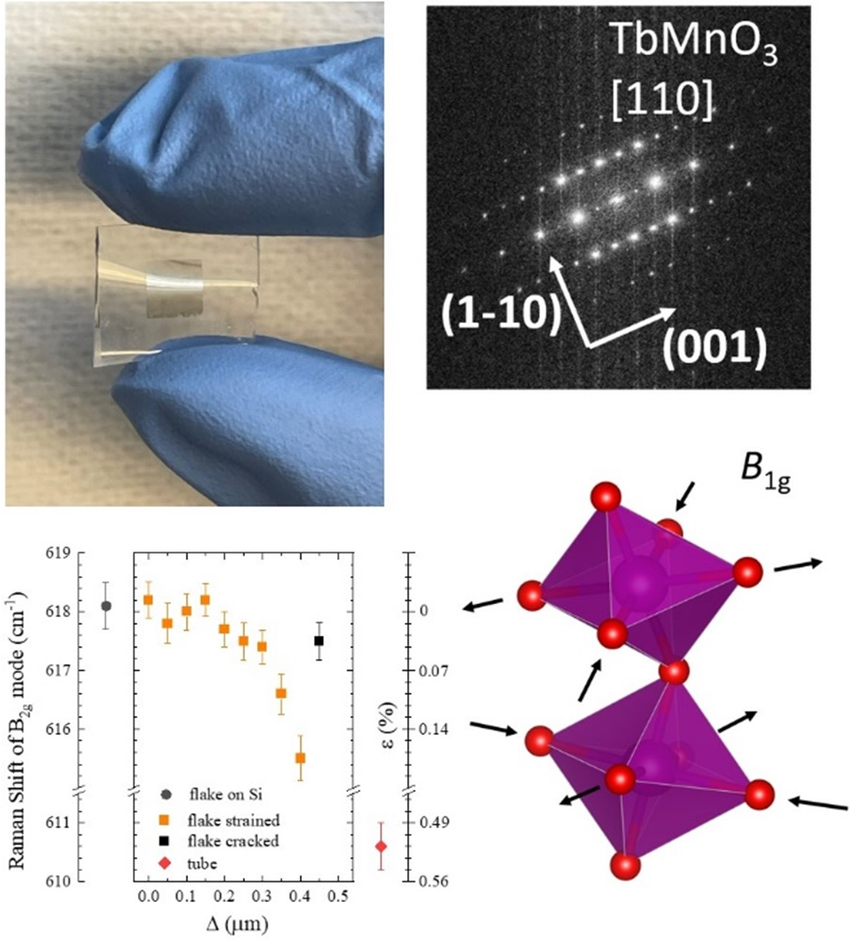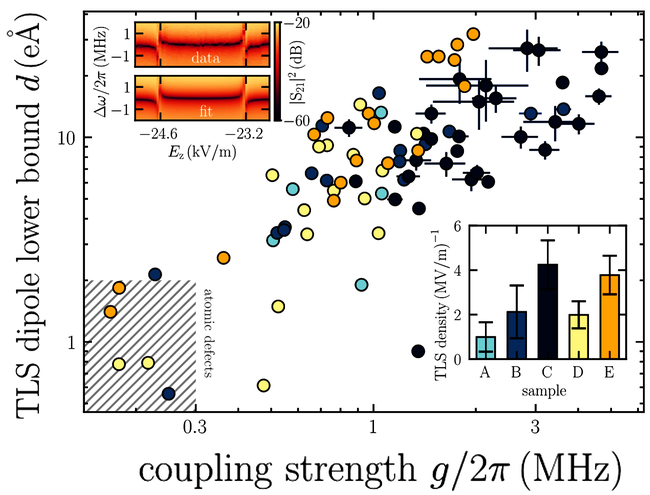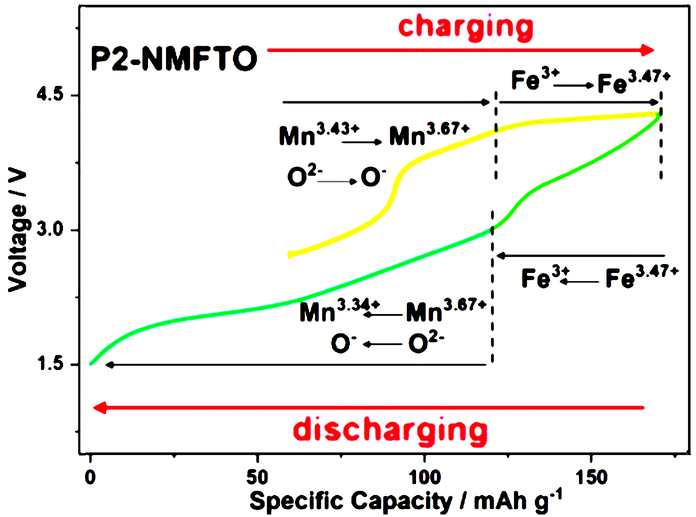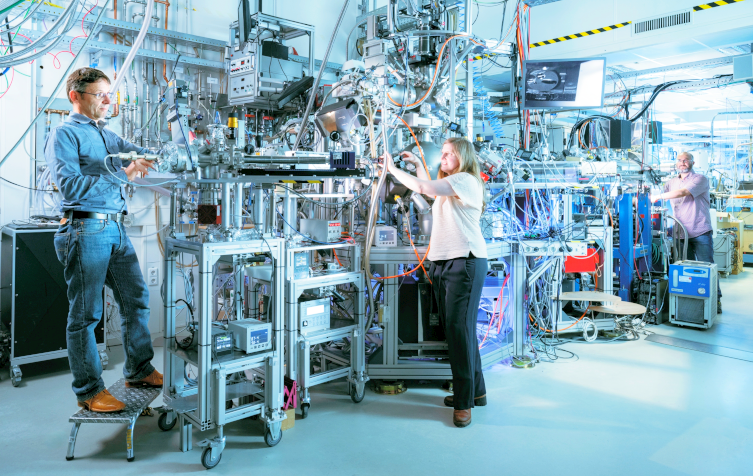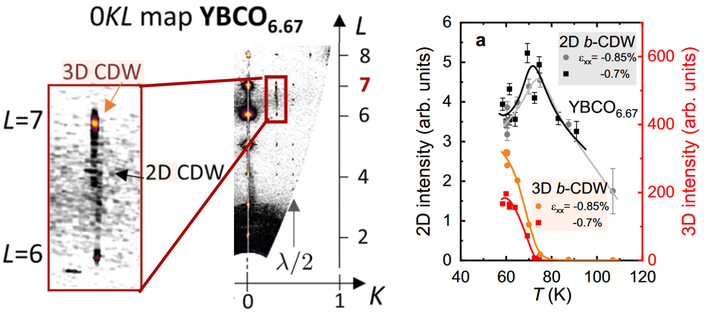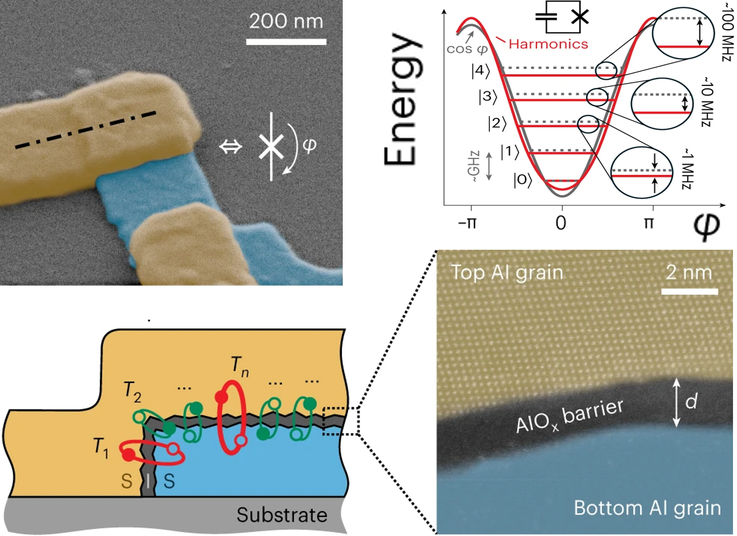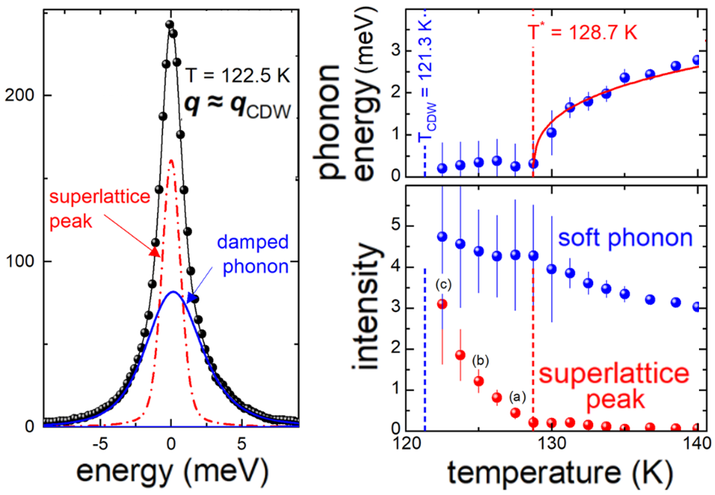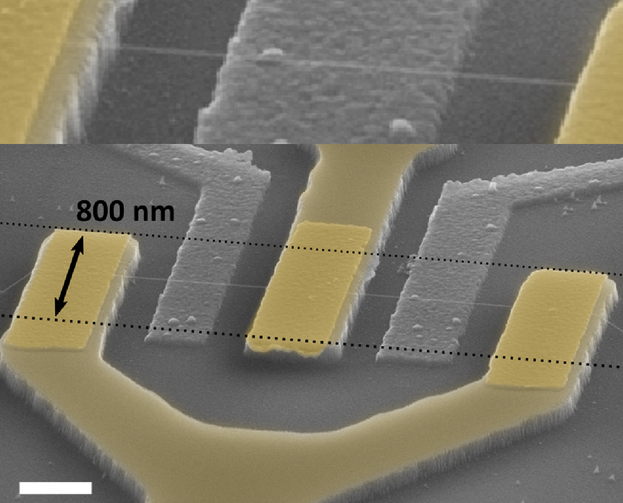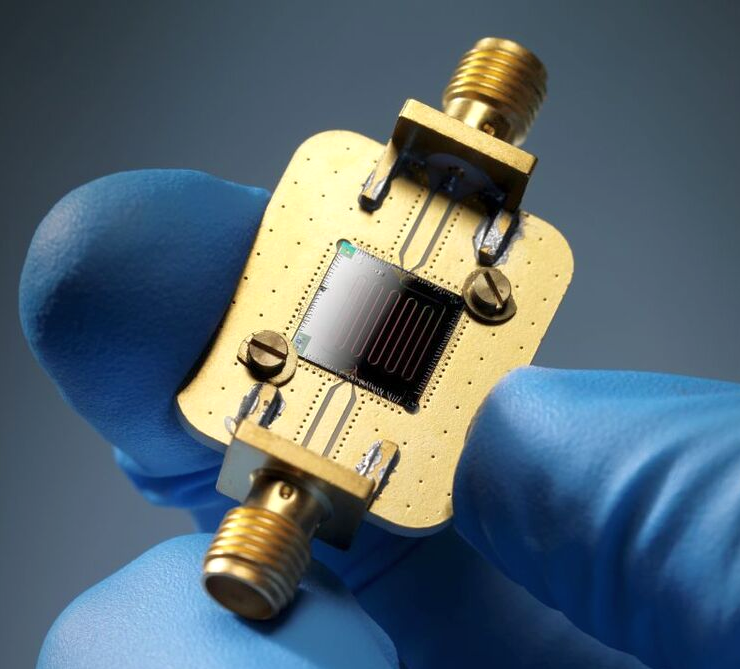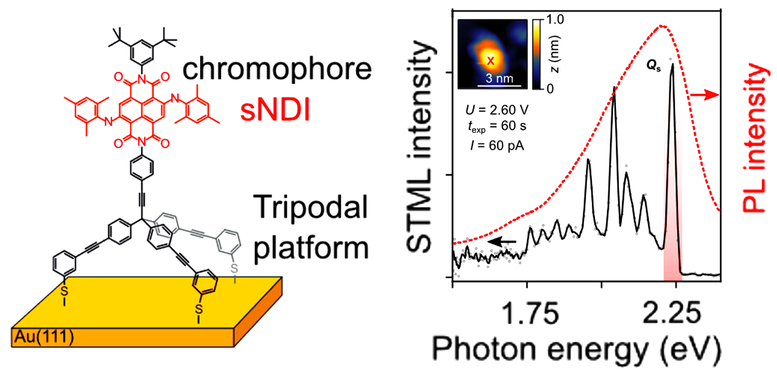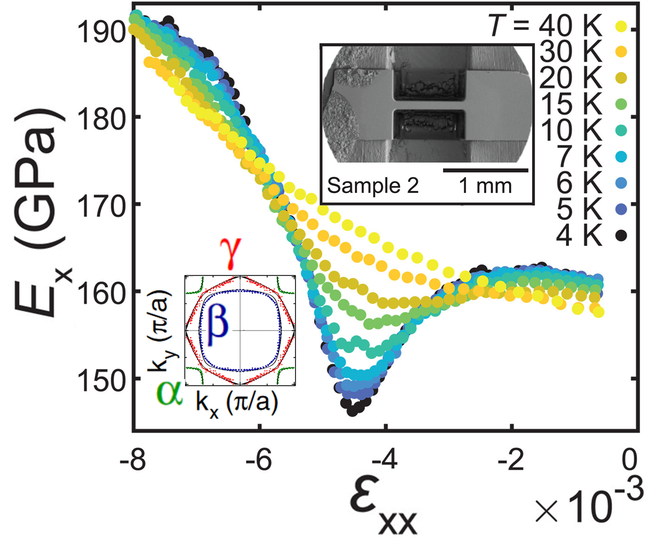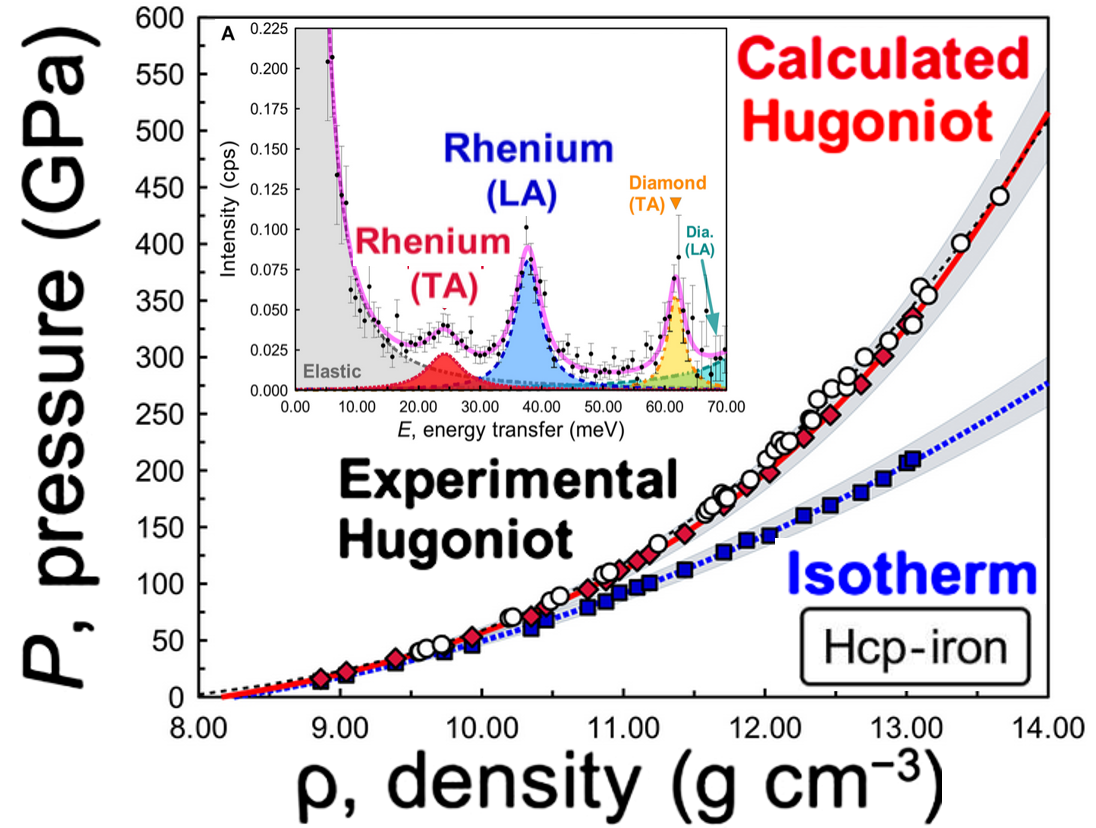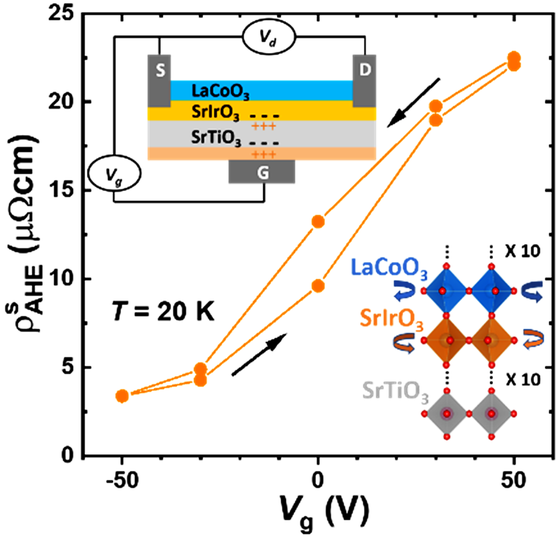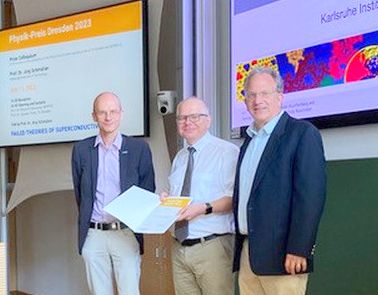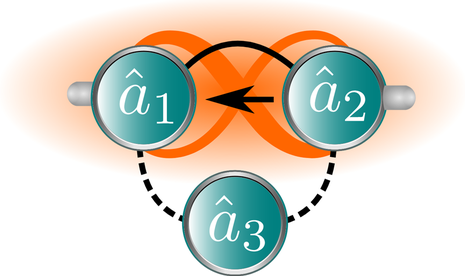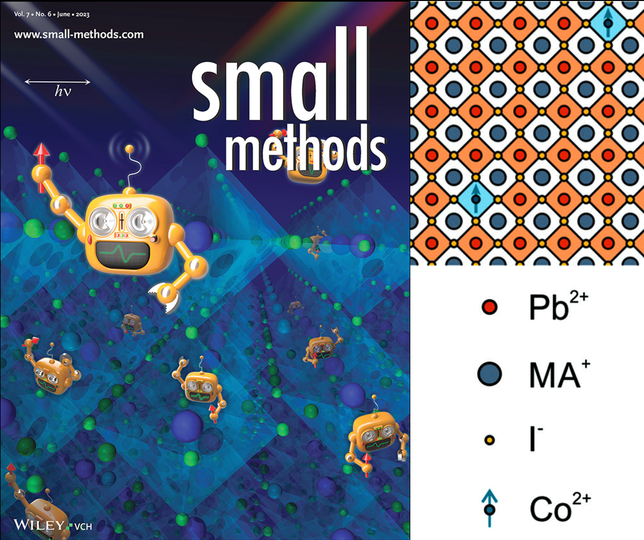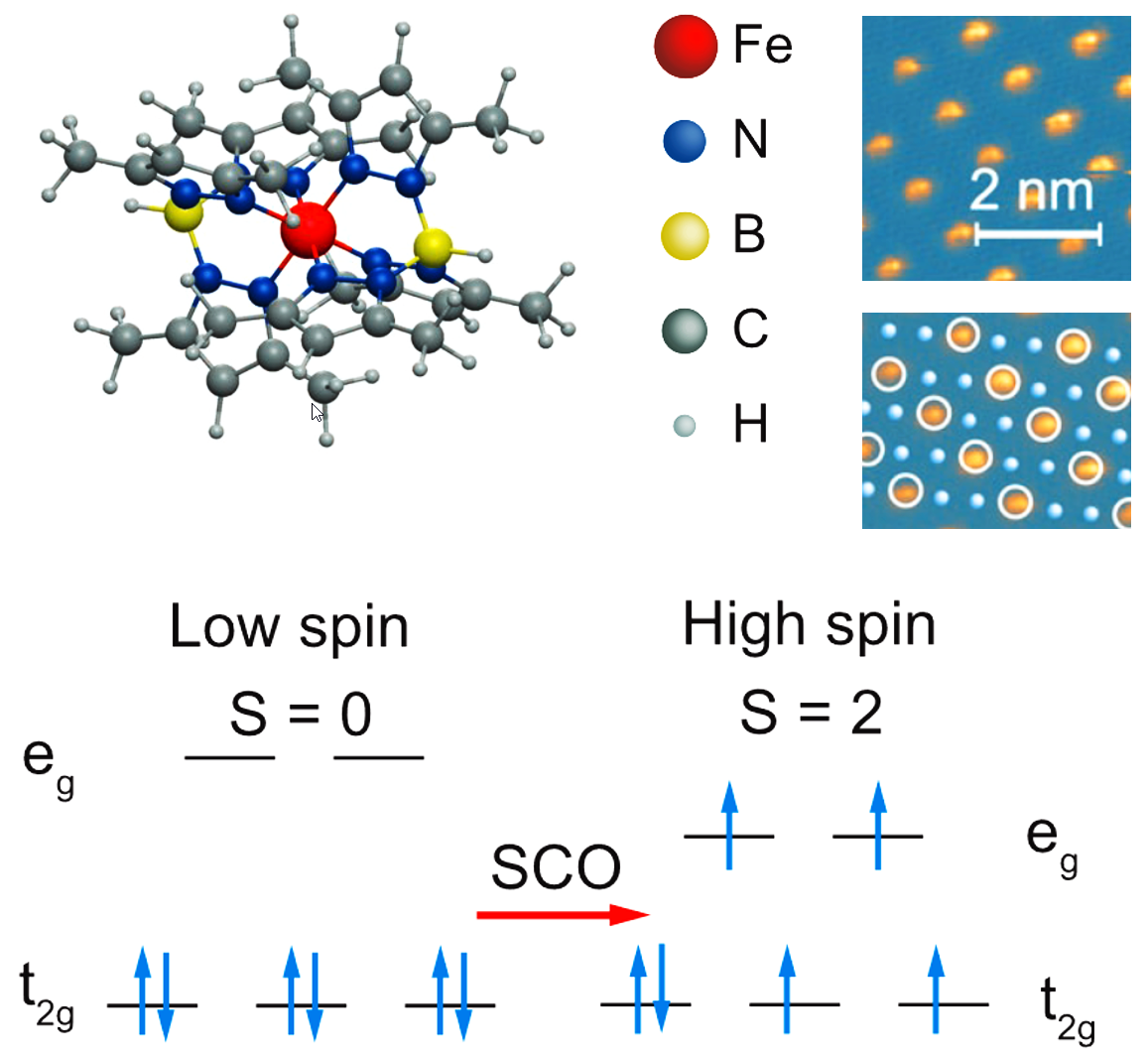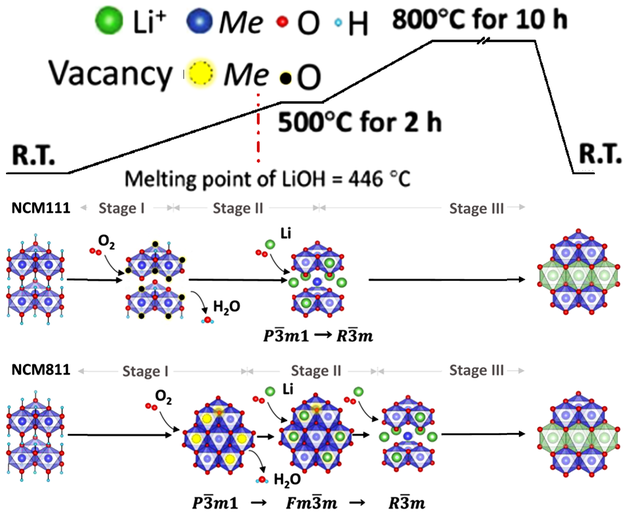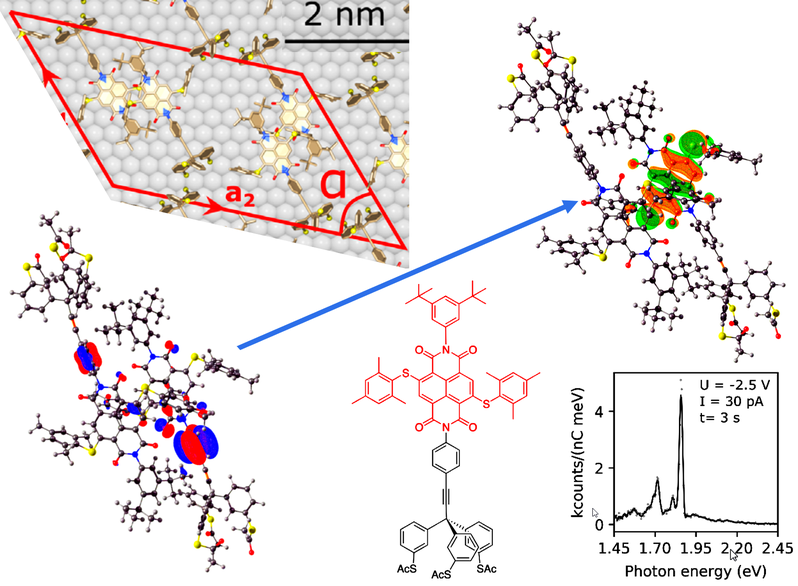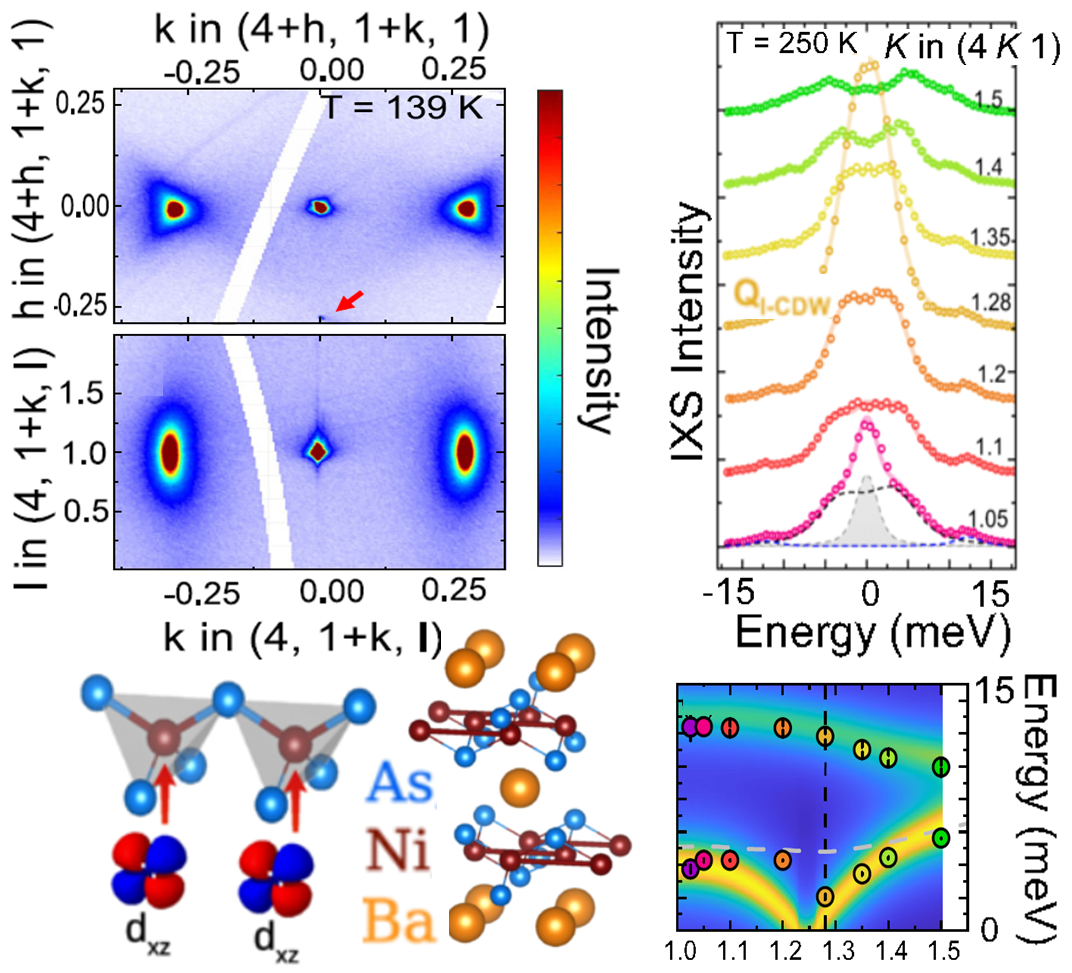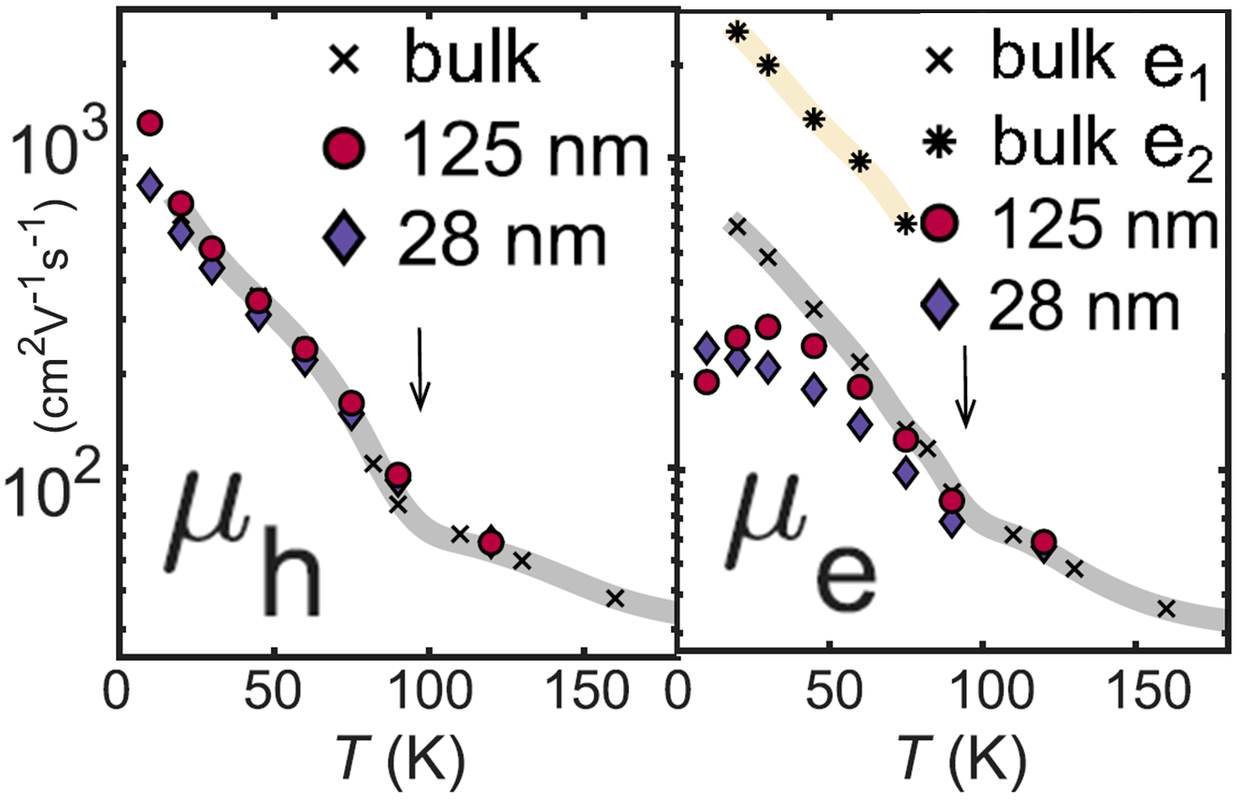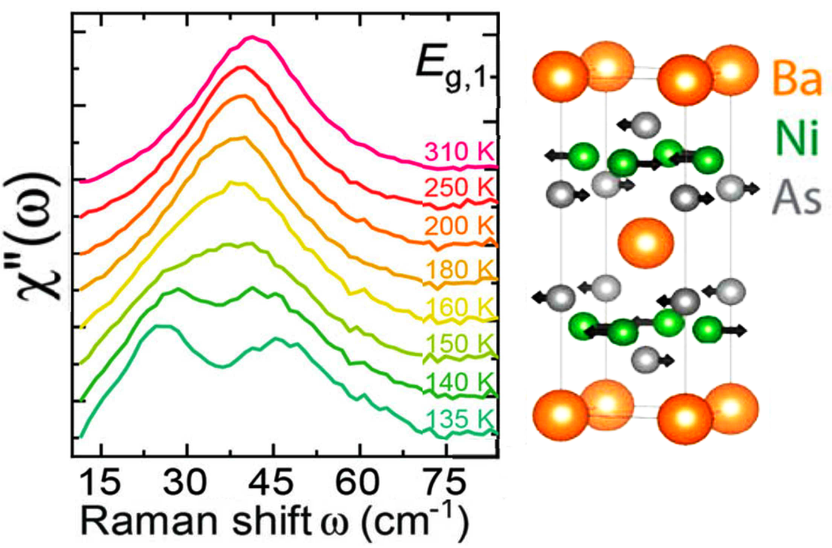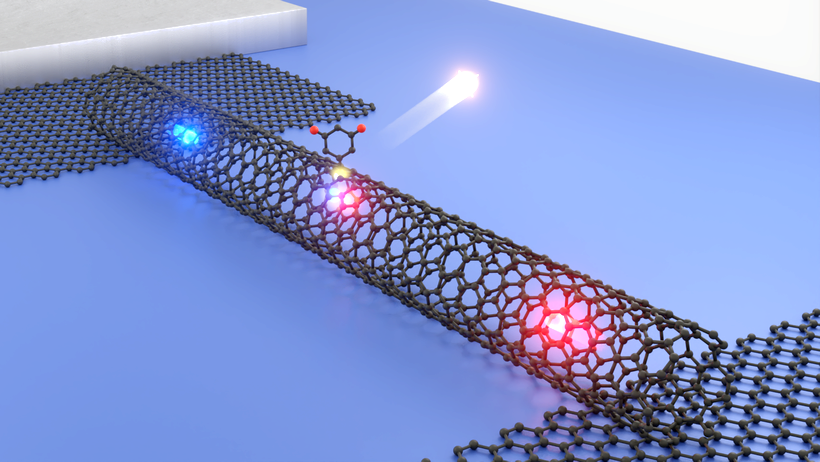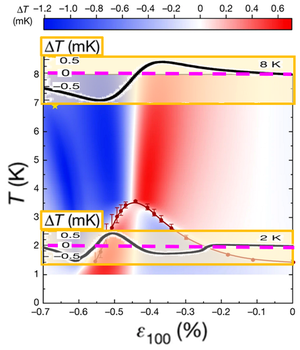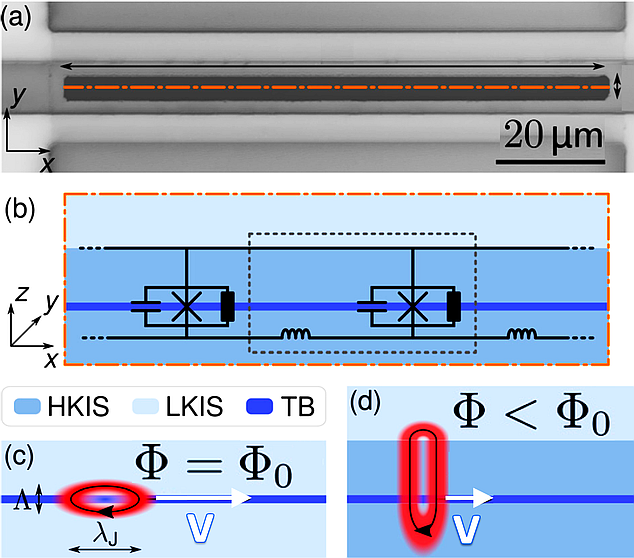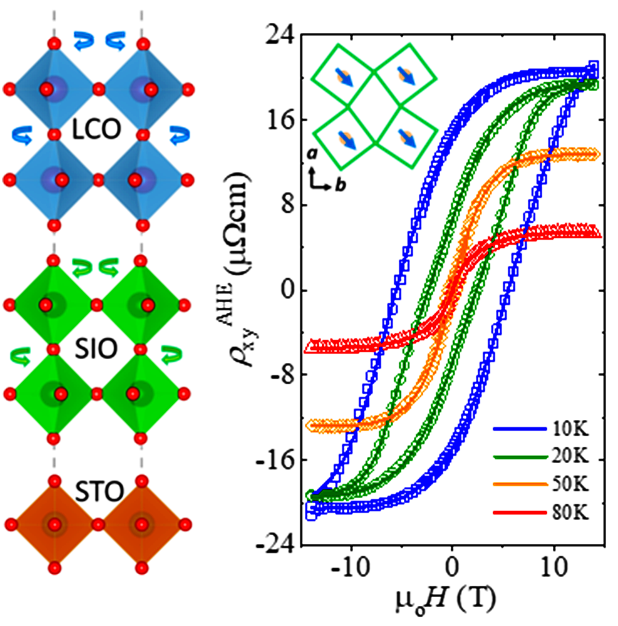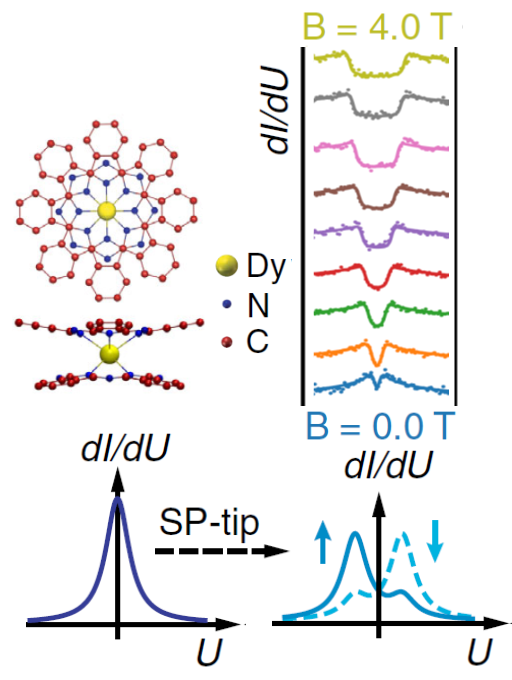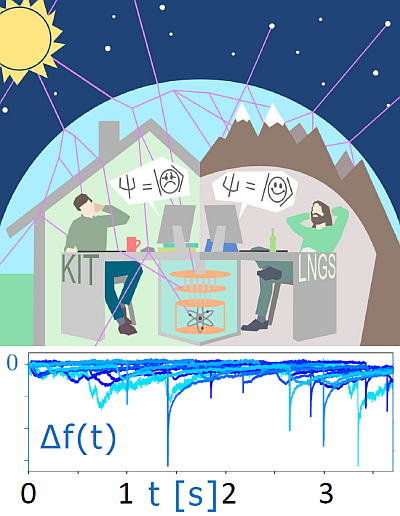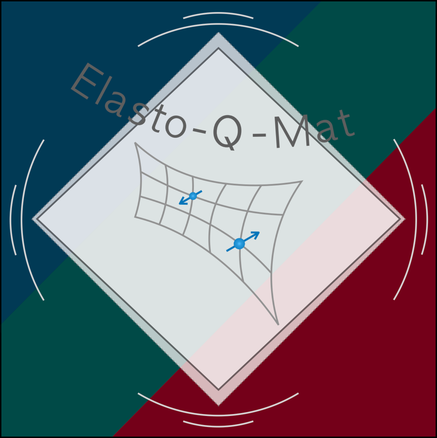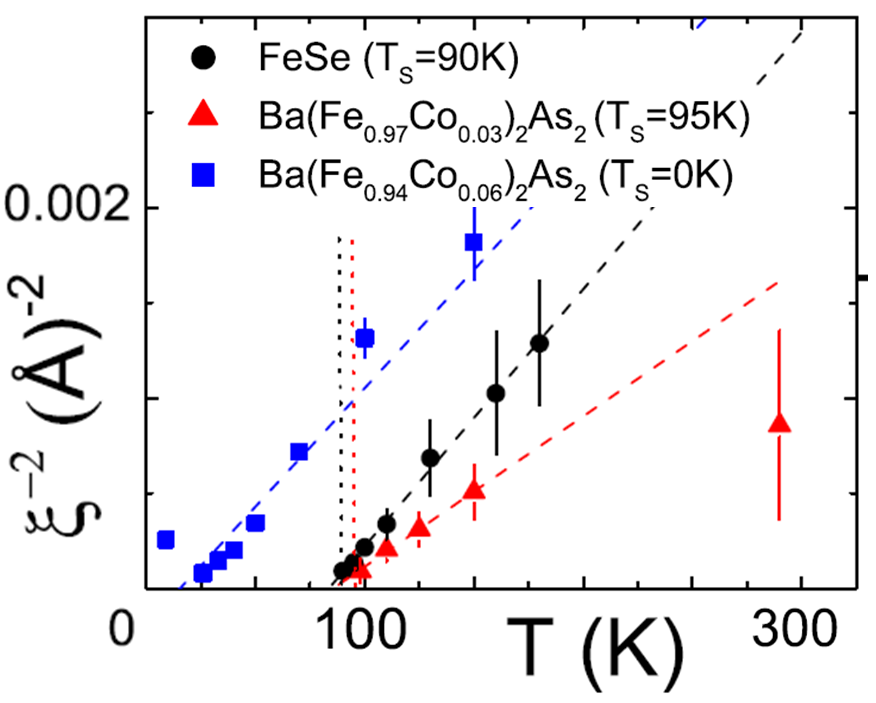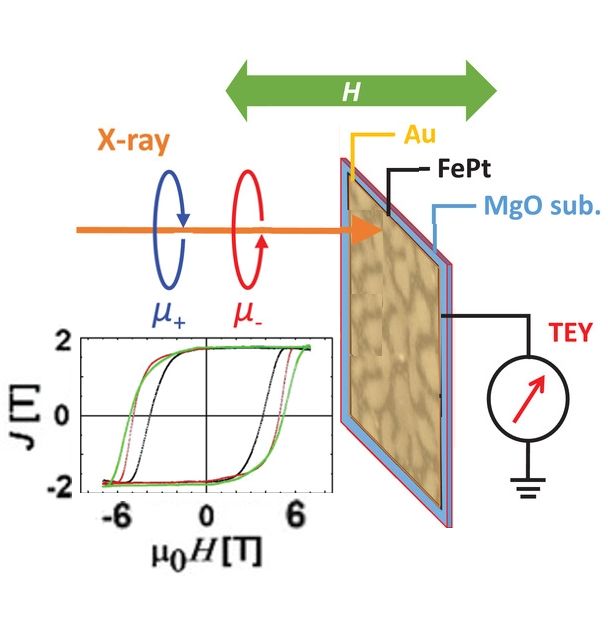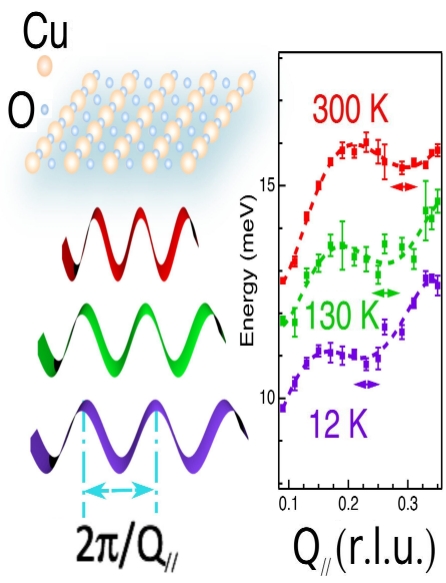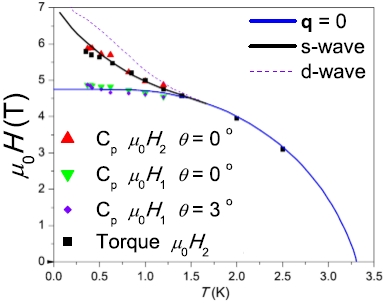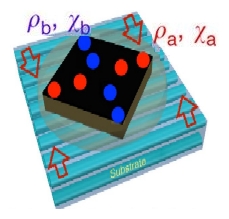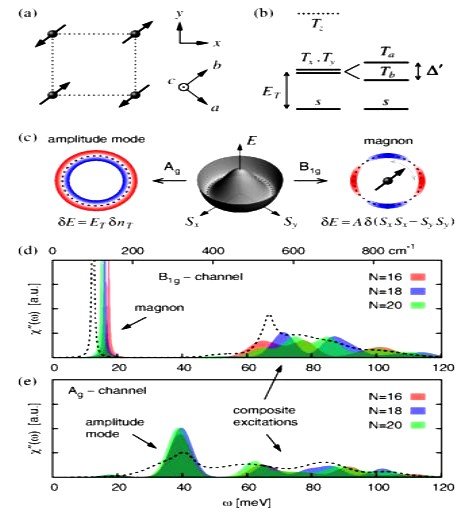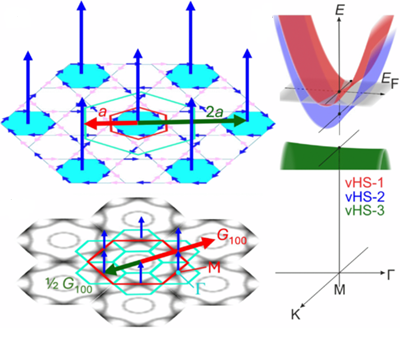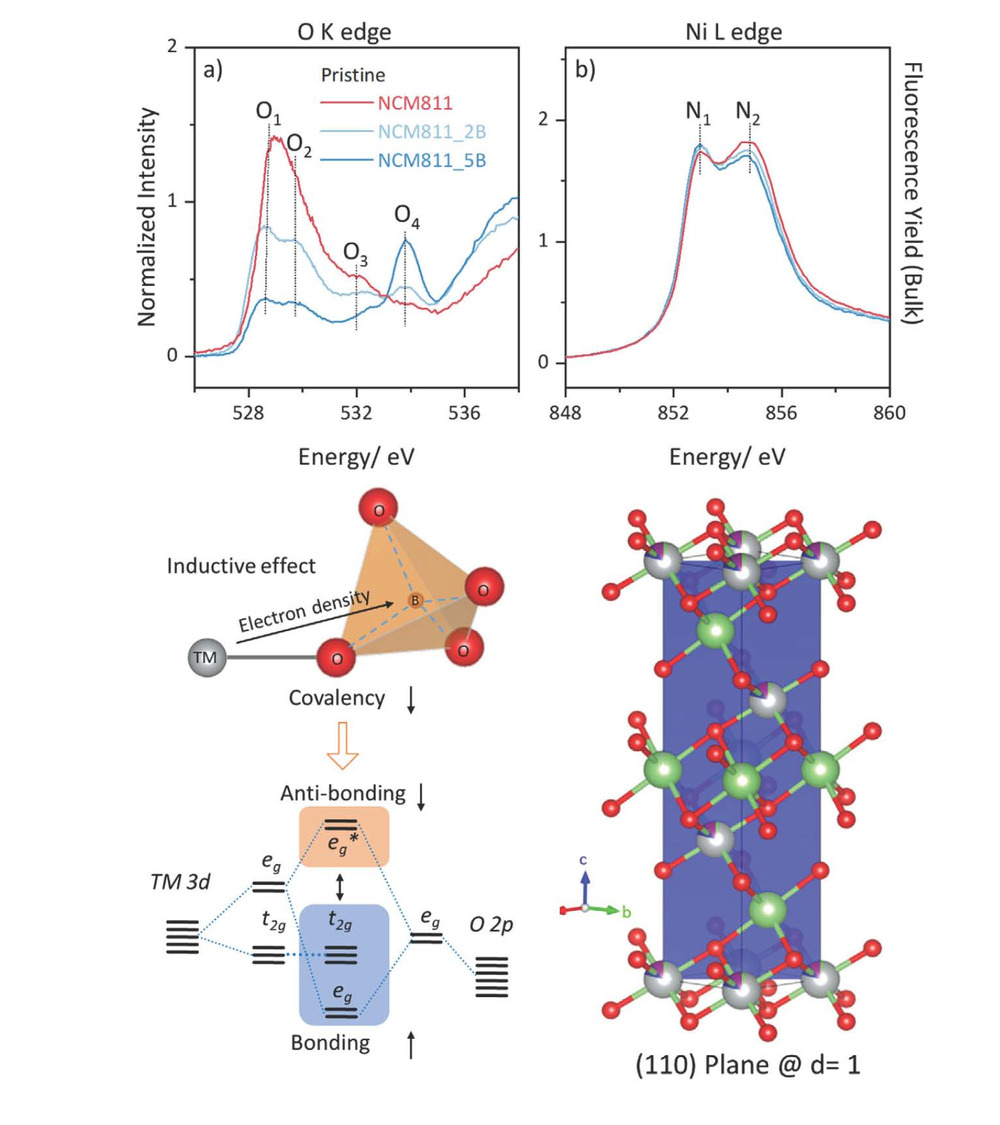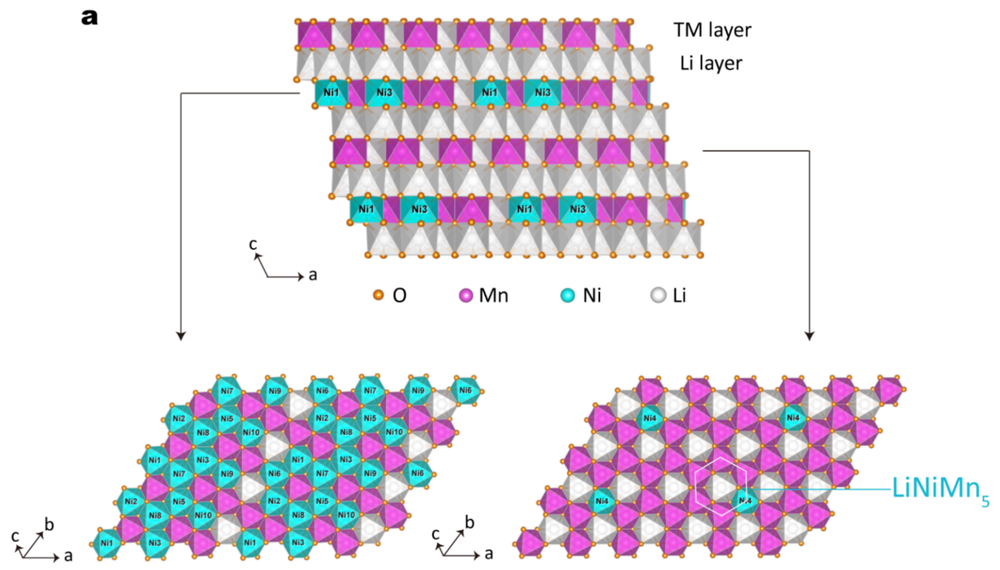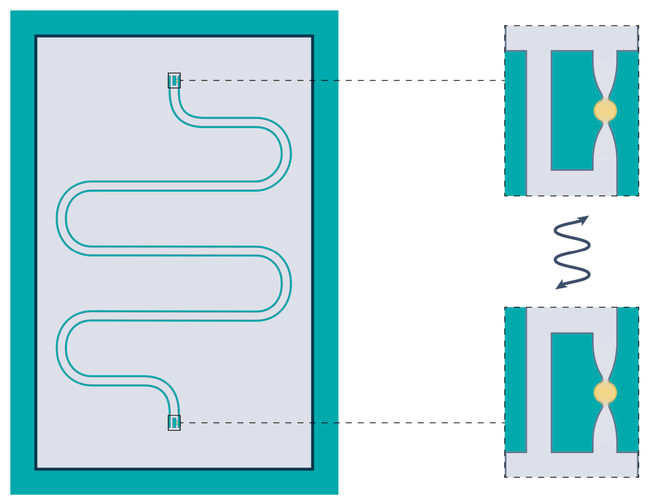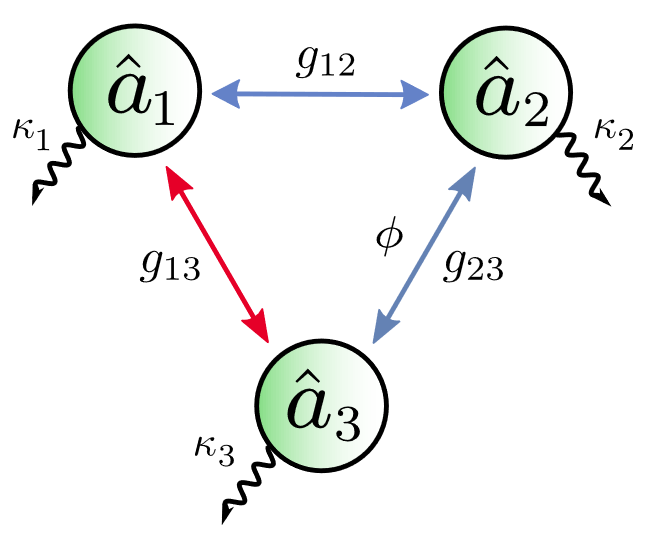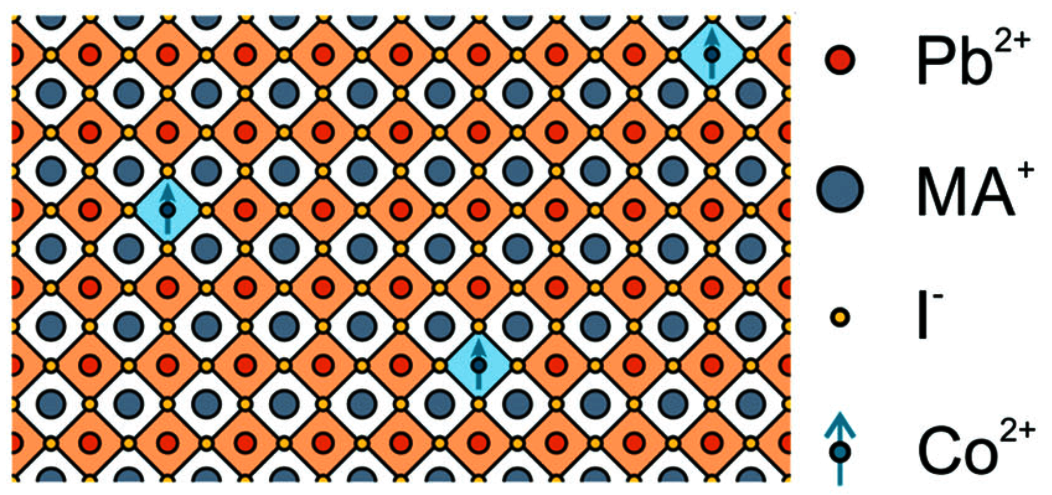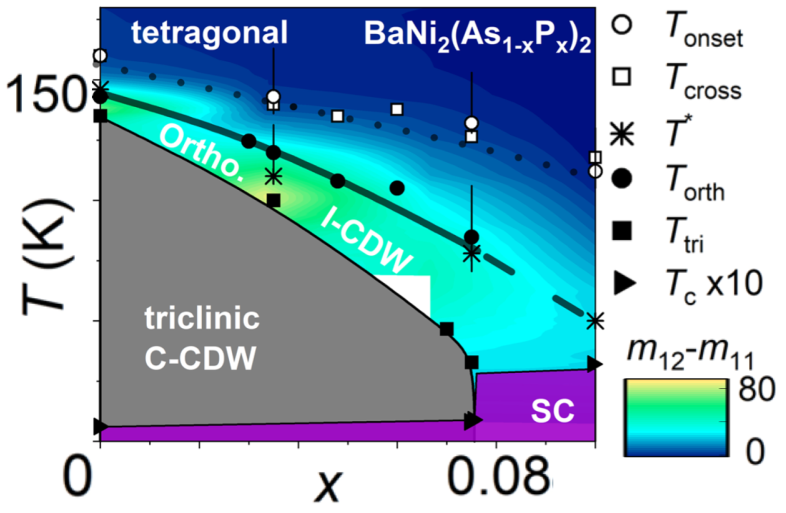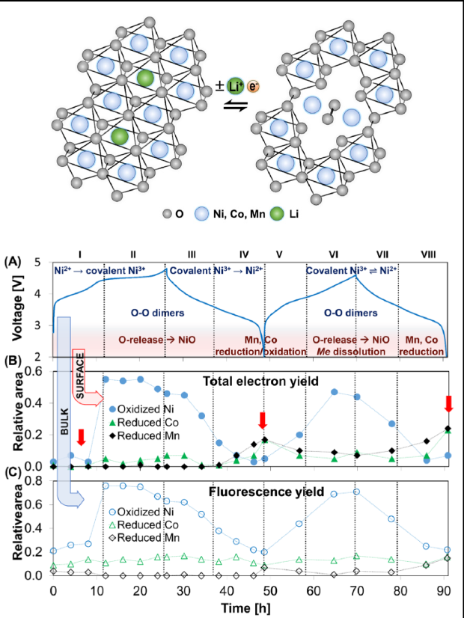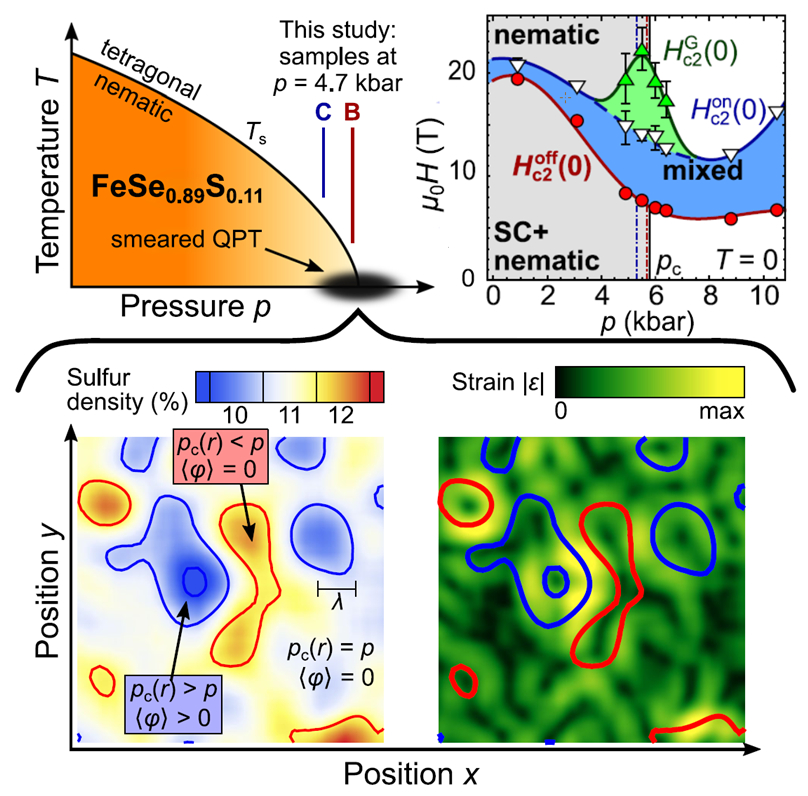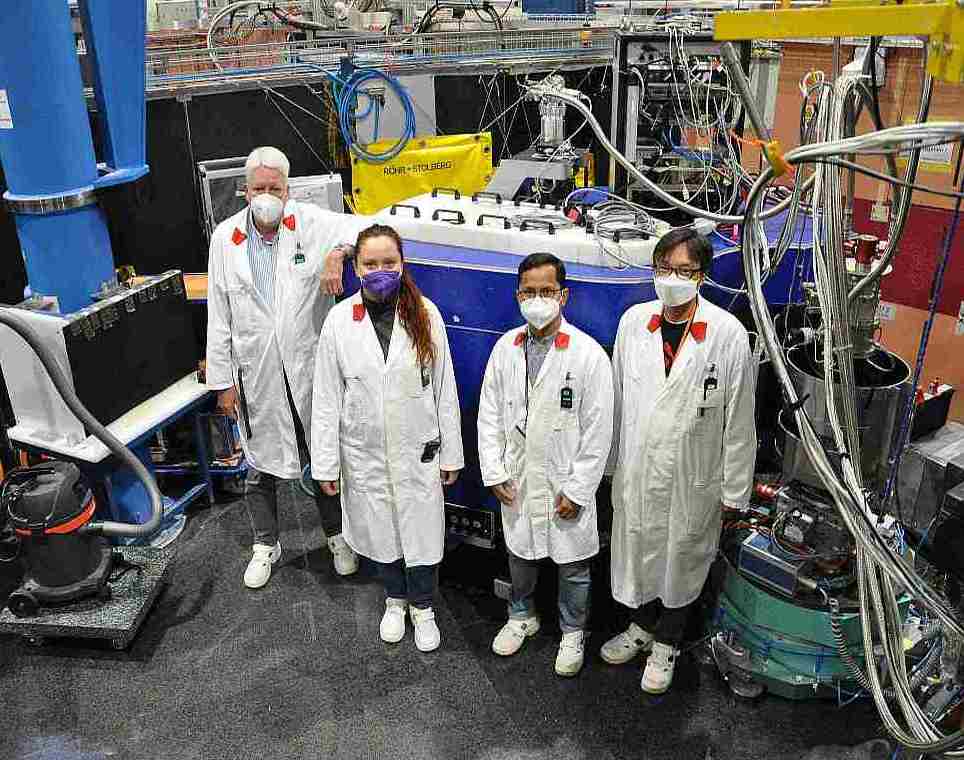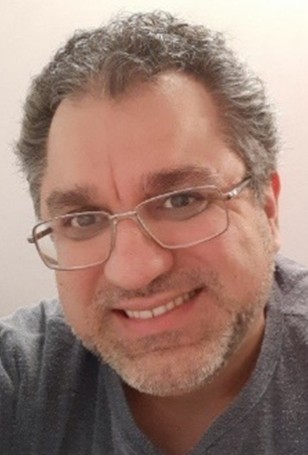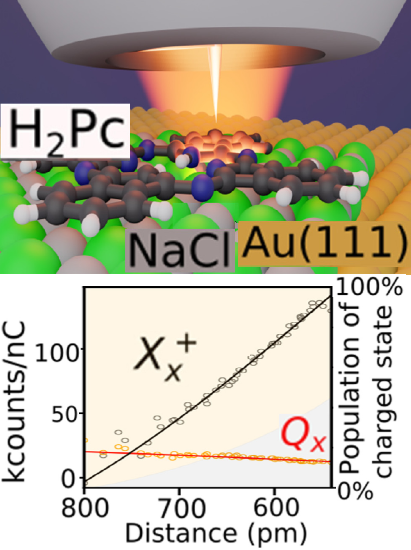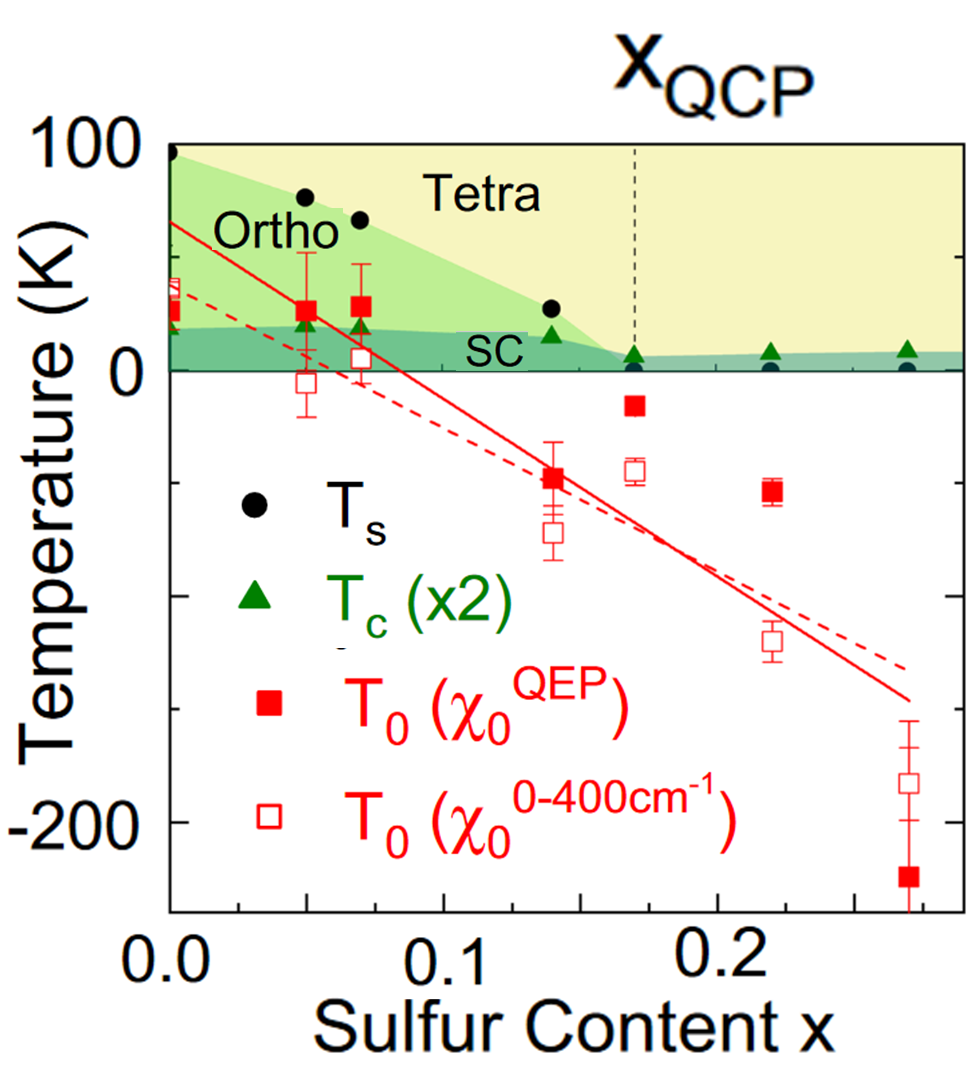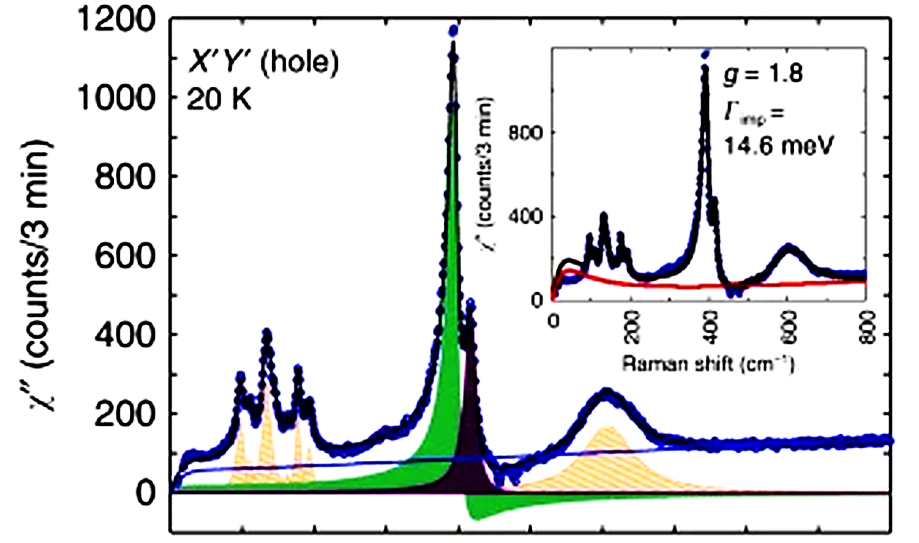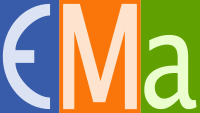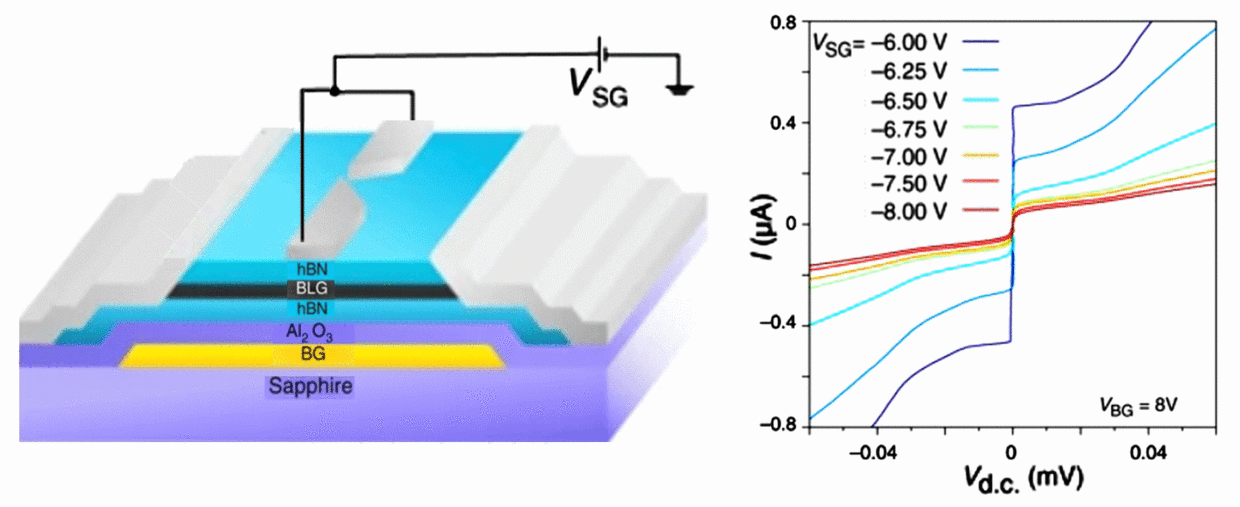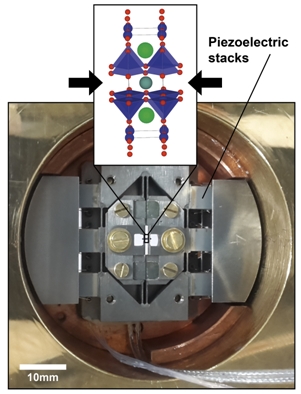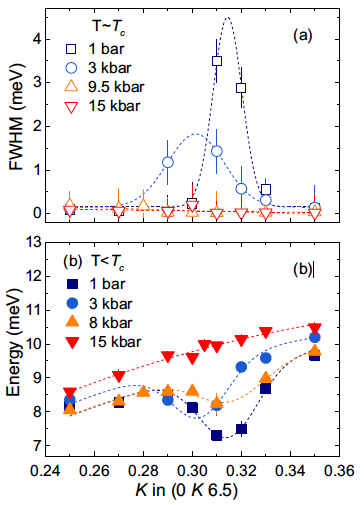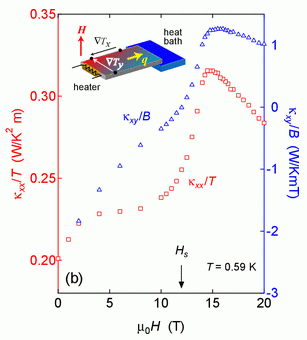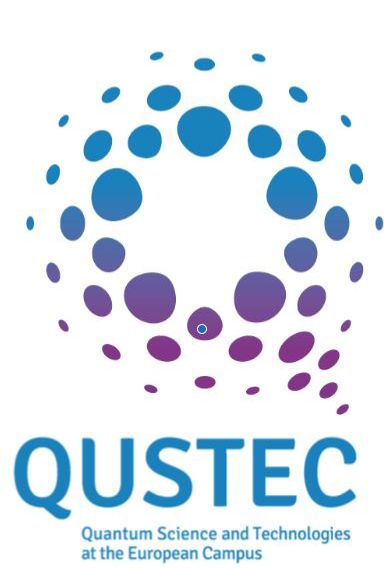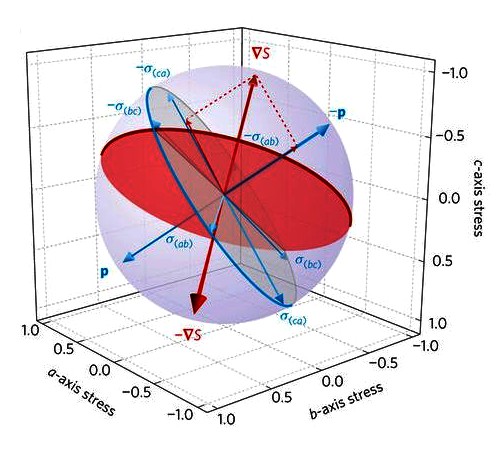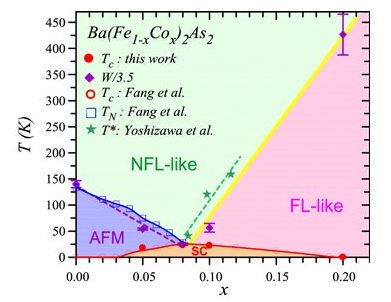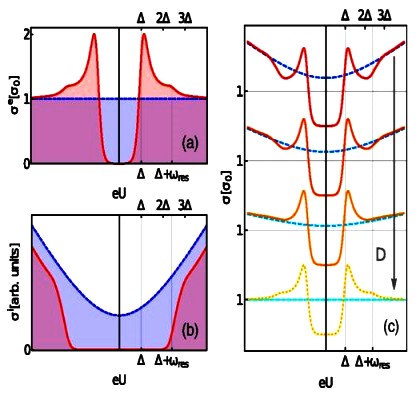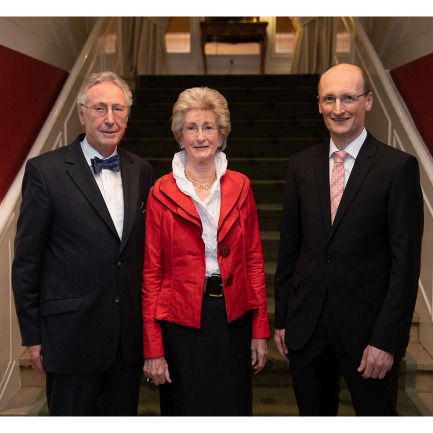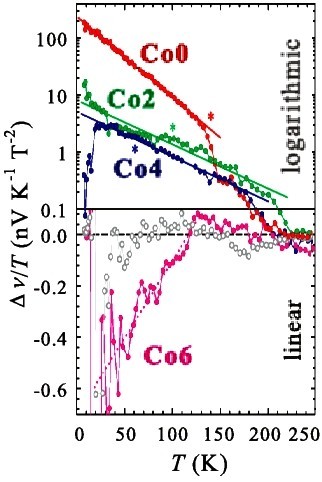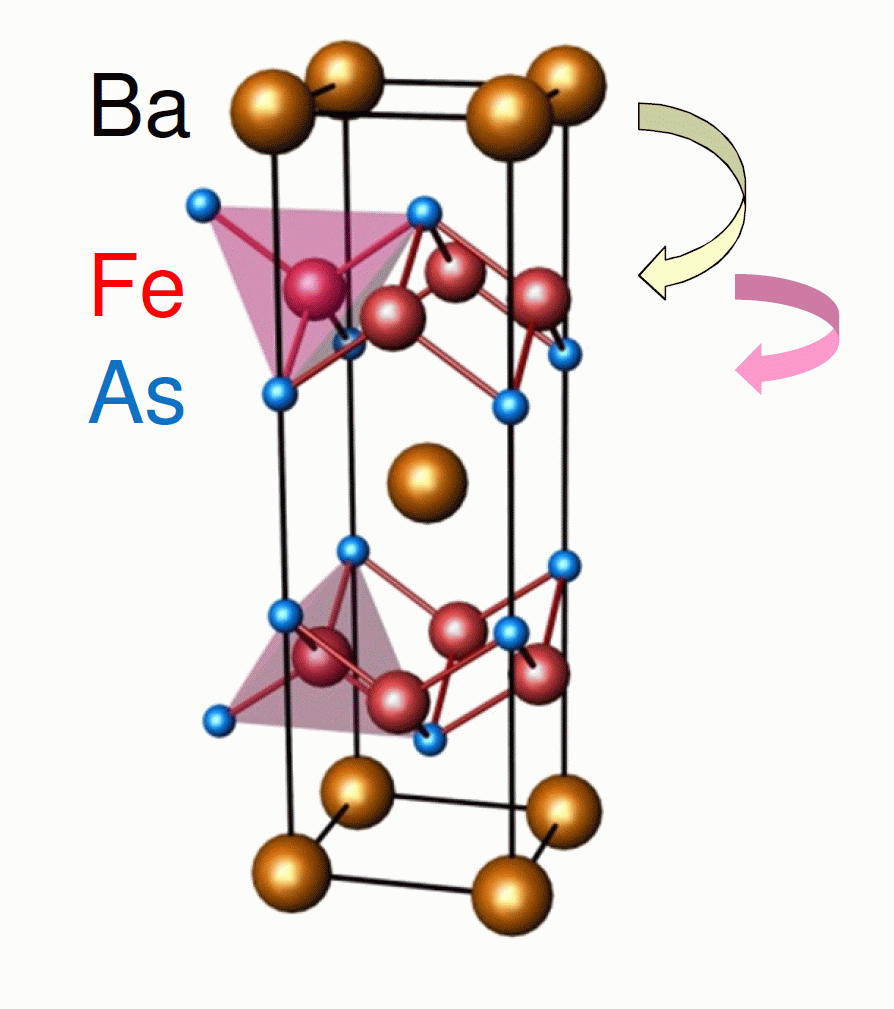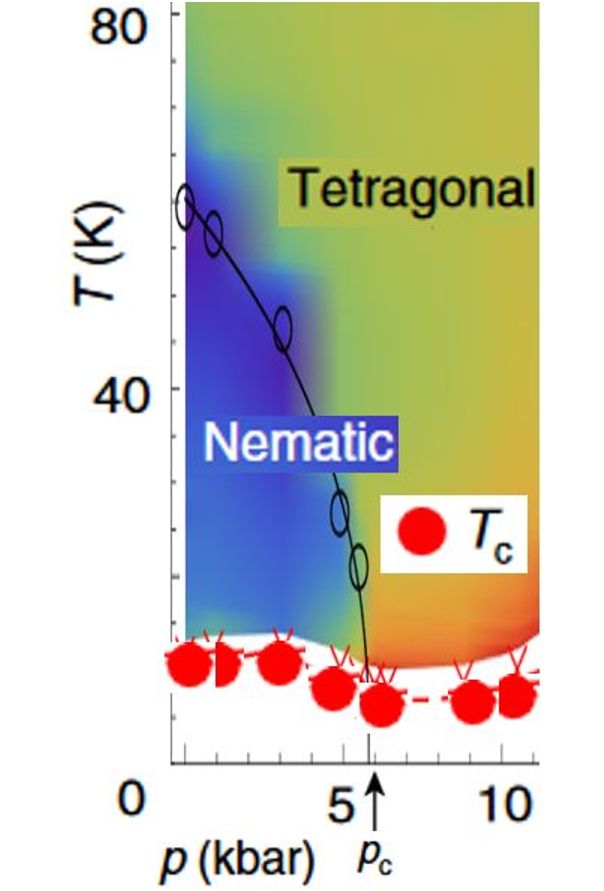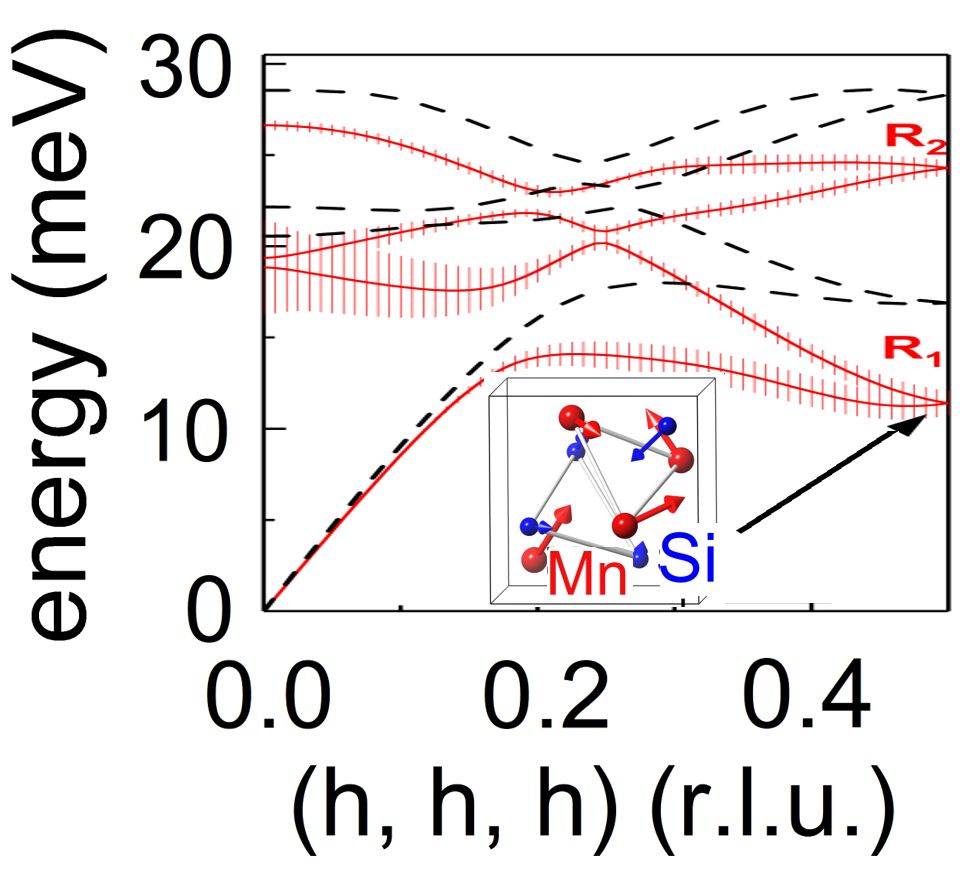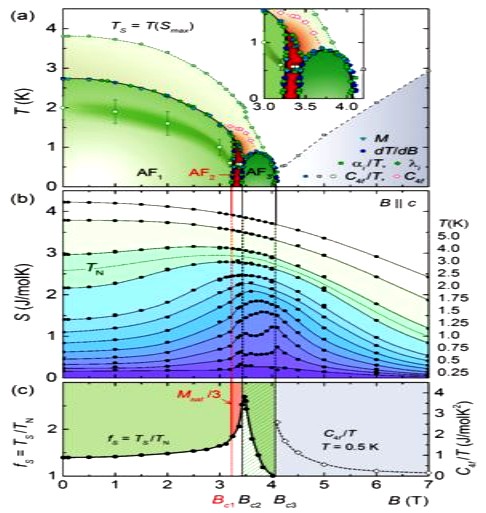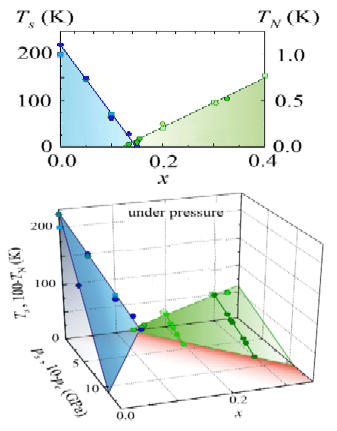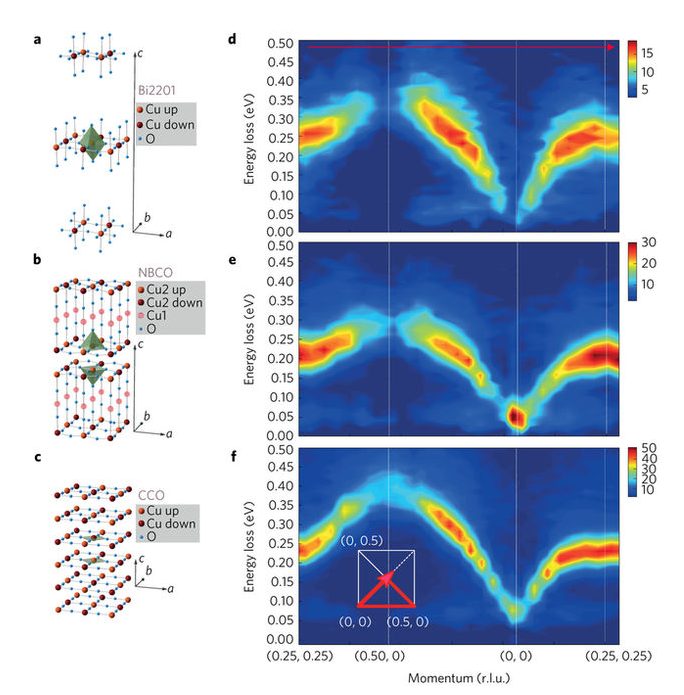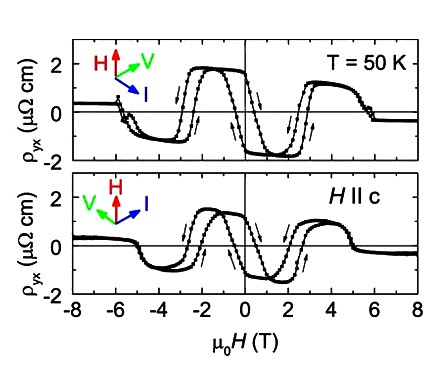Upcoming Events
For inquiries about our topical job offers at IQMT please contact Prof. Matthieu Le Tacon
Welcome at IQMT
Modern electronics are based on semiconducting materials in which the behavior of electrons can be accurately described using the laws of quantum mechanics derived at the beginning of the 20th century. Many other intriguing aspects of quantum physics, such as quantum coherence, superposition of states or entanglement, open groundbreaking perspectives for a 'second quantum revolution' in the fields of information, communication or computing technologies. These phenomena are delicate to observe in ordinary materials and remain largely unexploited.
Combining experiment and theory, the researchers at the Institute for Quantum Materials and Technologies (IQMT) at KIT seek to understand quantum phenomena in condensed matter and molecular systems, and to develop novel devices based on these effects that will serve as building blocks for future quantum technologies .
Publication Highlights / News
How to Make Quantum Computers Even More ReliableResearchers at KIT Investigate Interfering Quantum State Transitions in Measurements and Develop Strategies for Fault Avoidance |
Quantum Computers: Strong Magnetic Field Focuses Qubit Like a Magnifying GlassKIT researchers present stable fluxonium qubit that visualizes noise in the magnetic field – Publication in Nature Communications |
Dr. Tristan Thebault receives Humboldt research fellowshipDr. Tristan Thebault has been awarded a prestigious two years Humboldt research fellowship to carry out research in the “New Materials, Transport, Thermodynamics und Mesoscopy” group. Congratulations! |
Dr. Amir-Abbas Haghighirad is once again “Highly Cited Researcher”Dr. Amir-Abbas Haghighirad, together with four other scientists from KIT, is one of the “Highly Cited Researchers” of 2025. Congratulations! |
Welcome to Prof. Elena HassingerWe are delighted to welcome Prof. Elena Hassinger as the new head of the New Quantum Materials Department and of the research group “New Materials, Transport, Thermodynamics und Mesoscopy”. Prof. Hassinger brings extensive expertise in quantum materials, transport phenomena, and thermodynamic properties of correlated electron systems. We look forward to her leadership and the exciting research developments to come. |
IQMT Researchers Honored at International Workshops in ChinaFrédéric Hardy received the Best Talk Prize at the 2025 Sino-German Workshop on Quantum Materials held in Chongqing, recognizing his outstanding presentation and contributions to the field. |
Charge density waves and soft phonon evolution in the superconductor BaNi2(As1−xPx)2The superconductor BaNi2As2 exhibits a soft-phonon-driven, incommensurate charge density wave (I-CDW) which is accompanied by a small orthorhombic structural phase transition. Physical Review B 112 (2025) 54101 |
Transient Surface Degradation of LSCO and LSFO during OER in Alkaline Electrolyte under Dynamic Cycling ConditionsA fundamental understanding of the relationship between activity and stability is essential for rationalizing materials used as catalysts for the oxygen evolution reaction (OER). ACS Catalysis 15 (2025) 13768 |
Otto Haxel PhD award for Dr. Tom LacmannOn July 7, 2025, Dr. Tom Lacmann was awarded the Otto Haxel Dissertation Prize (1st place) for his dissertation entitled Origin, Symmetry and Elastic Tuneability of Charge Density Waves in the Superconductor BaNi₂(As₁₋ₓPₓ)₂. Congratulations! |
Chirality in the Kagome Metal CsV3Sb5Using x-ray photoelectron diffraction (XPD) and angle-resolved photoemission spectroscopy Physical Review Letters 134 (2025) 96401 |
Paradigm for Finding d-Electron Heavy Fermions: The Case of Cr-doped CsFe2AsDe’ Medici and his colleagues from Trieste and Karlsruhe demonstrated their technique experimentally by selecting a Hund metal made of cesium, iron, and arsenic and then replacing some of the iron atoms with chromium ones. The researchers found evidence for pronounced heavy-fermion behavior through measurements of the material’s resistivity, magnetic susceptibility, and thermal expansion. The team says that the next step is to use this strategy to create other heavy-fermion materials and explore their potentially advantageous properties. Physical Review Letters 134 (2025) 76504 |
Granular Aluminum Parametric Amplifier for Low-Noise Measurements in Tesla FieldsResearchers at IQMT and PHI developed a granular aluminum-based parametric amplifier that operates near the quantum limit in magnetic fields up to 1 Tesla, overcoming the intrinsic magnetic field sensitivity of Josephson junction amplifiers Physical Review Letters 133 (2024) 260604 |
Insights into Homogeneous Bulk Boron Doping at the Tetrahedral Site of NCM811 Cathode Materials: Structure Stabilization by Inductive Effect on TM-O-B BondsRechargeable lithium-ion batteries are critical for enabling sustainable energy storage. In this study, boron is homogeneously incorporated through co-precipitation, leading to an inductive effect on transition metal (TM)-O-B bonds that delayed structural collapse and reduced oxygen release. Small (2025) 2409743 |
Pressure-Dependent Electronic Superlattice in the Kagome Superconductor CsV3Sb5We present a high-resolution single crystal x-ray diffraction study of kagome superconductor CsV3Sb5, exploring its response to variations in pressure and temperature. Physical Review Letters 133 (2024) 236503 |
Tailoring superstructure units for improved oxygen redox activity in Li-rich layered oxide battery’s positive electrodesThe high-voltage oxygen redox activity of Li-rich layered oxides enables additional capacity beyond conventional transition metal (TM) redox contributions and drives the development of positive electrode active materials in secondary Li-based batteries. Nature Communications 15 (2024) 9981 |
Strange Metal and Superconductor in the Two-Dimensional Yukawa-Sachdev-Ye-Kitaev ModelFocusing on the inhomogeneity in the position of a quantum phase transition of so called strange metals provides answers to key puzzles in high-temperature superconductivity Physical Review Letters 133 (2024) 186502 |
Origin of the chiral charge density wave in transition-metal dichalcogenideChirality refers to a structure that lacks mirror symmetry. It can be observed in a wide range of platforms, from subatomic particles and molecules to living organisms. However, the underlying mechanisms that give rise to chirality in condensed matter systems have been a subject of considerable interest. Here we elucidate the mechanism of chiral charge density wave formation in the transition-metal dichalcogenide 1T-TiSe2. Nature Physics (2024) |
Andreev Qubits Coupled via cQEDPhoton-mediated long-range coupling of two Andreev pair qubits |
Collapse of metallicity and high-Tc superconductivity in the high-pressure phase of FeSe0.89S0.11We investigate the high-pressure phase of the iron-based superconductor FeSe0.89S0.11 using transport and tunnel diode oscillator studies using diamond anvil cells. npj Quantum Materials 9 (2024) 73 |
Anomalous Nernst effect in the noncollinear antiferromagnet Mn5Si3Using the Anomalous Hall and Nernst effect as well as a symmetry analysis of the proposed magnetic structures, a symmetry-breaking modification of the magnetic state with a rearrangement of the magnetic moments at low temperatures was found, thus questioning the previously reported models for the noncollinear magnetic structure obtained from neutron scattering. Communications Materials 5 (2024) 176 |
Observation of the sliding phason mode of the incommensurate magnetic texture in Fe/Ir(111)The magnetic texture in an iron monolayer on an iridium (111) surface is spatially modulated and has a uniaxial incommensurate structure, so that a Phason mode, a low-energy excitation corresponding to the sliding of the texture along this direction, is expected, which has now been confirmed by spin simulations and observed experimentally by scanning tunneling microscopy. npj Quantum Materials 9 (2024) 54 |
Quantum Oscillations Study of Tetragonal FeSe0.82S0.18 under PressureA quantum oscillations study of tetragonal FeSe0.82S0.18 under pressure up to 22 kbar revealed that the quasi-two-dimensional Fermi surfaces expand and the effective masses remain large, whereas the critical temperature for the onset of superconductivity Tc displays a threefold enhancement. npj Quantum Materials 9 (2024) 52 |
Flexible strained membranes of multiferroic TbMnO3The successful preparation of freestanding multiferroic TbMnO3 membranes enables to probe elastic properties and magnetoelectric coupling under continuous strain. Applied Physics Letters 125 (2024) 11901 |
Annealing-Tunable Charge Density Wave in the Magnetic Kagome Material FeGeThe formation of a charge density wave (CDW) in the magnetic kagome material FeGe within the antiferromagnetic phase (AFM) can be explained by the disordered formation of dimers of Ge atoms displaced out of the Fe3Ge layers (Ge1a → Ge1b). Physical Review Letters 132 (2024) 256501 |
Giant Two-Level Systems in a Granular SuperconductorAn experimental investigation of two-level systems (TLS) in granular aluminum thin films under applied mechanical strain and electric fields revealed a class of strongly coupled TLS having electric dipole moments up to 30 eÅ, an order of magnitude larger than dipole moments commonly reported for solid state defects. Physical Review Letters 132 (2024) 217002 |
Understanding the Electrochemical Reaction Mechanism of the Cathode Material Na2/3Mn7/12Fe1/3Ti1/12O2 for Sodium-Ion BatteriesUsing Na2/3Mn7/12Fe1/3Ti1/12O2 (NMFTO) as an optimized cathode material for Na-ion batteries, an initial discharge capacity of 170 mA h g–1 at a 0.1 C rate and a capacity retention of 80% after 50 cycles was achieved. Chemistry of Materials 36 (2024) 4107 |
Colossal c-axis response and lack of rotational symmetry breaking within the Kagome planes of the CsV3Sb5 superconductorBulk thermodynamic measurements (high-resolution thermal expansion, heat capacity, elastoresistance) on CsV3Sb5 single crystals reveal a strong competition between the charge-density wave (CDW) and the superconducting states which is dramatically influenced by c-axis tuning where the CDW is characterized by a strongly enhanced A1g-symmetric elastoresistance. Physical Review Letters 132 (2024) 186001 |
Battery research with synchrotron radiationWith the new measuring instrument NAPXAS (Near Ambient Pressure X-ray Absorption Spectroscopy), energy conversion and ageing processes in battery energy storage systems can be investigated spectroscopically under quasi-normal wet chemical conditions during battery operation. KIT-Presseinformation 39 (2024) |
Interplay between 2D and 3D charge density waves in underdoped high-temperature superconducting YBa2Cu3OyA hard x-ray diffraction study on underdoped YBa2Cu3Oy under uniaxial stress as external tuning parameter revealed a competition between 2D and 3D charge density wave orders which simultaneously compete with superconductivity. Nature Communications 15 (2024) 3277 |
Observation of Josephson harmonics in tunnel junctionsHigher-harmonics deviations of the current–phase relations of AlOx tunnel Josephson junctions from the standard sinusoidal form as extracted from experimental energy spectra of various transmon circuits indicate a possible optimization route for superconducting Qubit circuits. Nature Physics (2024) |
Full phonon softening above the CDW phase transition in 2H-TaSe2Inelastic x-ray scattering (IXS) studies with meV resolution on the Charge Density Wave (CDW) transition in 2H-TaSe2 reveal an extended temperature region between T* = 128.7 K and the ordering temperature of the incommensurate CDW phase TCDW = 121.3 K, where the full phonon softening of a longitudinal acoustic phonon mode at qCDW = (0.323,0,0) occurs, i.e. there exists a temperature window where lattice fluctuations, observed as the overdamped soft phonons, coexist with static but only medium-range-sized CDW domains, which form a long-range ordered state only for T ≤ TCDW. Nature Communications 14 (2023) 7282 |
Nano-assembled open quantum dot nanotube devicesA novel preparation technique for the mechanical integration of carbon nanotubes (CNTs) into electronic circuits enables significantly more transparent CNT-metal interfaces and thus the realisation of superconducting qubits or flux-mediated optomechanics based on carbon nanotubes. Communications Materials 5 (2024) 5 |
EU Project on Quantum-Limited Microwave AmplifiersThe EU-funded and KIT-coordinated project "TruePA" aims at the further development of a "Truly Resilient Quantum Limited Traveling Wave Parametric Amplifier" , an amplifier device for weak microwave signals which could be a key component for quantum cryptography, communication, or computing. KIT-News 2023 (0) |
Hot luminescence from single-molecule chromophores electrically and mechanically self-decoupled by tripodal scaffoldsEnlarging the π-systems of the footing substituents of the tripodal scaffold molecule enabled the spectrally and spatially resolved observation of the hot luminescence bands of individual self-decoupled chromophores. Nature Communications 14 (2023) 8253 |
Amir-Abbas Haghighirad is again in 2023 "Highly Cited Researcher"Just as in the three previous years, Amir-Abbas Haghighirad belongs, together with four other KIT scientists, again in 2023 to the "Highly Cited Researchers" , a ranking list which comprises the names of the scientists with the highest number of citations of their publications between January 2012 and December 2022. KIT-News (2023) |
Giant lattice softening in Sr2RuO4 due to electronic Lifshitz transitionUsing a piezo-based uniaxial pressure cell to tune the ultraclean metal Sr2RuO4 while measuring the stress-strain relationship, revealed a huge lattice softening which could be attributed to a Lifshitz transition of a two-dimensional Fermi surface demonstrating that the lattice softening is driven entirely by the conduction electrons of the relevant energy band. Science 382 (2023) 447 |
ERC Synergy Grant for Axion Detector based on Superconducting QubitsThe 6-year international project "Quantum Technologies for Axion Dark Matter Search" ("DarkQuantum" for short) has been awarded an ERC Synergy Grant worth €12.9 million, including around €2 million for KIT, to build a system based on superconducting qubits as extremely low-noise detectors for the experimental detection of axions, previously hypothetical elementary particles that are considered promising candidates for dark matter. KIT-Presseinformation 87 (2023) |
Improved primary high pressure scale challenges current understanding of Earth's core physicsBy combined measurement of the acoustic velocities and the density from a rhenium sample in a diamond anvil cell using inelastic x-ray scattering and x-ray diffraction a primary pressure scale could be established which extends to the multimegabar pressures of Earth’s core and leads to the conclusion that the present picture of the physics of Earth’s core has to be revised. Science Advances 9 (2023) 8706 |
Band-resolved Caroli–de Gennes–Matricon states of multiple-flux-quanta vortices in a multiband superconductorUsing scanning tunneling microscopy, the winding number of individual vortices in Pb in the intermediate state at mK temperature could be determined from the real space wave function of its Caroli–de Gennes–Matricon bound states. Science Advances 9 (2023) 9163 |
Giant Non-Volatile Electric Field Control of Proximity Induced Magnetism in SrIrO3In heterostructures with proximity-induced magnetic SrIrO3, a giant variation of the anomalous Hall conductivity and Hall angle as a function of the applied gate voltage Vg by up to 700% were observed. Advanced Functional Materials (2023) 2308346 |
Dresden Physics Prize 2023 for Jörg SchmalianJörg Schmalian receives the Dresden Physics Prize of the Year 2023 in recognition of his research in the field of condensed matter theory and in recognition of his contributions to promoting close cooperation between the Max Planck Institute for the Physics of Complex Systems (MPI-PKS) and the TU Dresden. Physik-Preis Dresden (2023) |
High-Purity Entanglement Using NonreciprocityIn a collaboration of FU Berlin, Princeton University, Hebrew University of Jerusalem and KIT it is proposed utilizing nonreciprocity to enhance the robustness of continuous-variable entanglement of propagating modes against thermal fluctuations, achieving high-purity flying entangled states through the breaking of reciprocity in a two-mode squeezing interaction and leveraging pairwise Gaussian interactions, making it well-suited for parametric circuit-QED implementations, e.g. in superconducting circuitry. PRX QUANTUM 4 (2023) 20344 |
Co-substituted Magnetic Metal Halide PerovskiteSubstitution of Co2+ into the lattice of methylammonium lead triiodide (MA(Pb:Co)I3) was shown to impart magnetic behavior to the material while maintaining photovoltaic performance at low concentrations. Small Methods (2023) 2300095 |
Fe(II) Spin Crossover molecules on magnetic Co/Au(111)For a sub-monolayer of Fe(II) spin crossover (SCO) complex molecules deposited on Au passivated Co films on Au(111) it could be demonstrated that the SCO complexes in the high spin state interact ferromagnetically with the ferromagnetic Co film and stilll maintain their SCO ability. Small (2023) 2300251 |
Monitoring the Formation of Li-Battery Cathode MaterialsThe syntheses of Ni-poor (“NCM111”, LiNi1/3Co1/3Mn1/3O2) and Ni-rich (“NCM811” LiNi0.8Co0.1Mn0.1O2) lithium transition-metal oxides were investigated using in situ synchrotron powder diffraction and near-edge X-ray absorption fine structure spectroscopy. Chemistry of Materials 35 (2023) 1514 |
STM activation of the electroluminescence of individual molecules on a Au substrateSTM experiments provide evidence that it is possible to activate the electroluminescence of individual 2,6-core-substituted naphthalene diimide molecules directly deposited onto a Au(111) substrate. Physical Review Letters 130 (2023) 36201 |
Soft-Phonon and Charge-Density-Wave Formation in BaNi2As2Energy-resolved inelastic x-ray scattering investigation of the incommensurate charge density-wave (I-CDW) in BaNi2As2 revealed by direct comparison with ab initio density functional calculations a phonon instability as origin of the transition to the I-CDW state. Physical Review Letters 129 (2022) 247602 |
Granular aluminium nanojunction fluxonium qubitNanoscopic Josephson junctions created by a single-layer deposition of a 20 nm thin film of granular aluminium and lithographical definition of 20 nm wide nanobridges showed in a simple qubit circuit similar coherence times in the microsecond range as Al–AlOx–Al superconductor–insulator–superconductor (SIS), the present state-of-the-art Josephson junction for qubit circuits, however with even better technical perspectives for the construction of more complex qubit circuits. Nature Materials (2022) |
Localization of electrons in the nematic phaseMagnetotransport studies of thin flakes of FeSe revealed an an unusual asymmetry between the mobilities of the electrons and holes in the nematic electronic phase, with hole-like quasiparticle with a lighter effective mass and a quantum scattering time three times shorter, as compared with bulk FeSe and a localization of the negative charge carriers by reducing the dimensionality. PNAS 119 (2022) 2200405 |
Electronic nematic liquid in BaNi2As2In BaNi2As2 a large splitting of doubly degenerate phonon lines was observed well above symmetry breaking and attributed to a dynamical effect, rooted in a particularly strong coupling between these phonons and fluctuations between degenerate electronic nematic configurations. Nature Communications 13 (2022) 4535 |
Electroluminescence from Single-Walled Carbon Nanotubes with Quantum DefectsSingle-tube devices based on (7, 5) carbon nanotubes, functionalized with dichlorobenzene molecules, and wired to graphene electrodes showed electrically generated, defect-induced emissions that are controllable by electrostatic gating and strongly red-shifted compared to emissions from pristine nanotubes. ACS Nano (2022) |
Elastocaloric Determination of the Phase Diagram of Sr2RuO4A piezoelectric-based device was used to map out the phase diagram of Sr2RuO4 by identifying changes of sign of the elastocaloric response function as a function of temperature with phase transitions. Nature 607 (2022) 276 |
Fluxons in High-Impedance Long Josephson JunctionsThe characteristic impedance of long Josephson junctions could be increased by an order of magnitude using thin films of a high kinetic inductance superconductor as electrodes, which makes these junctions suitable for a variety of applications in superconducting electronics. Applied Physical Letters 120 (2022) 112601 |
Molecular Crystals for Quantum Information DevicesNovel molecular crystals containing rare-earth ions exhibit optical linewidths that are 3 to 4 orders of magnitude narrower than those of any previously known molecular system thus enabling their use as spin-photon interfaces for photonic quantum technologies. Nature 603 (2022) 241 |
Topological Magnon Band Structure in a Skyrmion LatticeInelastic neutron-scattering measurements indicate the formation of Landau levels for magnons in the skyrmion phase of MnSi. Science 375 (2022) 1025 |
Proximity-induced Ferromagnetism in SrIrO3In SrIrO3/LaCoO3 heterostructures ferromagnetism and a strong, intrinsic and positive anomalous Hall effect could be induced in the SrIrO3 layer by proximity to the ferromagnetic insulating LaCo3. Advanced Materials 34 (2022) |
John Bardeen Prize 2022 for Jörg SchmalianJörg Schmalian was awarded the 2022 John Bardeen Prize. |
Momentum Dependence of Electron-Phonon CouplingStrong renormalization of the life time of lattice vibrations, i.e. phonons, can occur in the absence of both Fermi surface nesting and lattice anharmonicity if electron-phonon coupling is strongly enhanced for specific values of electron-momentum. Nature Communications 13 (2022) 228 |
Spin-Readout of Single-Molecule Magnet with STMIn Bis(phthalocyaninato)dysprosium (DyPc2) single molecules on Au(111) the Dy moment has been determined by milli-Kelvin scanning tunneling microscopy. Physical Review Letters 127 (2021) 123201 |
Effect of natural radioactivity on superconducting qubitsThe effect of natural radioactivity on the operation of superconducting qubit circuits has been investgated in collaboration of KIT and Istituto Nazionale di Fisica Nucleare (INFN). Nature Communications 12 (2021) 2733 |
Electromigration and Quantum Phase Slip in Al nanowiresVia electromigration the normalconducting resistance RN of Al nanowires could be reduced by up to 3 orders of magnitude to select hereby insulating, metallic or superconducting behaviour which enabled the validation of Quantum Phase Slip ("QPS") behaviour of superconducting nanowires. ACS Nano 15 (2021) 4108 |
Disproof of divergent nematic susceptibility in CsFe2As2By neutralization of thermal expansion in a piezoelectric-based strain cell the strain dependence of the electrical resistivity of CsFe2As2 the electron system response could be shown to be largely symmetric in the Fe2As2 plane. Physical Review Letters 125 (2020) 187001 |
All-optical polarization of the ground-state nuclear spins of Eu-IonsLong-lived spectral holes have been burnt in the absorption spectrum of a binuclear Eu(III) complex which demonstrate an efficient polarization of the ground-state nuclear spins of the rare-earth ions. Nature Communications 12 (2021) 2152 |
ELASTO-Q-MAT initiative funded by DFGA new Transregional Collaborative Research Center (SFB-TRR) in close cooperation between the Karlsruhe Institute of Technology (KIT), the Goethe University Frankfurt, the Johannes Gutenberg University Mainz, the Max Planck Institute of Polymer Research in Mainz, and the Max Planck Institute for Chemical Physics of Solids in Dresden will investigate quantum materials whose properties can be dramatically changed through elastic deformations. |
Nematic correlation length in Fe-based superconductorsBy inelastic x-ray scattering the nematic correlation length ξ has been extracted from the anomalous softening of acoustic phonon modes in FeSe and Ba(Fe1-xCox)2As2 (x = 0.03, 0.06). Physical Review Letters 124 (2020) 157001 |
Record Magnetic Performance in FePt NanomaterialsIn ferromagnetic FePt nanoparticles, an unprecedented energy product of 80 MGOe at room temperature well above the previous record 59 MGOe in NdFeB has been achieved. Small (2019) 1902353 |
Low-Energy Phonon Anomalies in Cuprates with StripesA precise measurement of the lattice vibrations in stripe-ordered La2-xBaxCuO4 showed that the fluctuating CDW correlations that exist at high temperature have a different periodicity than the static ordered CDW but the same periodicity as YBa2Cu3O6+δ. Physical Review X 8 (2018) 11008 |
Thermodynamic Evidence for FFLO-State in KFe2As2The magnetic phase diagram of KFe2As2 near the upper critical field provides with a clear double transition when the field is strictly aligned in the FeAs plane and a characteristic upturn of the upper critical field line, which goes far beyond the Pauli limit at 4.8 T firm evidence of a Fulde-Ferrell-Larkin-Ovchinnikov ("FFLO"). Physical Review Letters 119 (2017) 217002 |
Dominant magnetic interactions in BaFe2As2For BaFe2As2 the magnetic susceptibility and resistivity anisotropies measured on application of a large symmetry breaking strain strongly suggest that magnetism plays the dominant role in the hierarchy of interactions based on magnetic as well as to orbital, lattice, and nematic degrees of freedom. Nature Communications 8 (2017) 504 |
TiOx nanotubes for gas-analytical multisensorsTiOx nanotube layers on multisensor array chips demonstrated at operating temperatures up to 400°C a promising sensitivity and selectivity towards organic vapors in the ppm range. Scientific Reports 7 (2017) 9732 |
Raman scattering from Higgs mode in Ca2RuO4Raman scattering and neutron scattering provide strong evidence for excitonic magnetism in Ca2RuO4. Physical Review Letters 119 (2017) 67201 |
Electron-phonon coupling in Topological InsulatorsThe electron-phonon interaction in the metallic surface state of the 3D topological insulators Bi2Se3 and Bi2Te3 is carried by optical modes of polar character which is weakly screened by the metallic surface state. Scientific Reports 7 (2017) 1059 |




